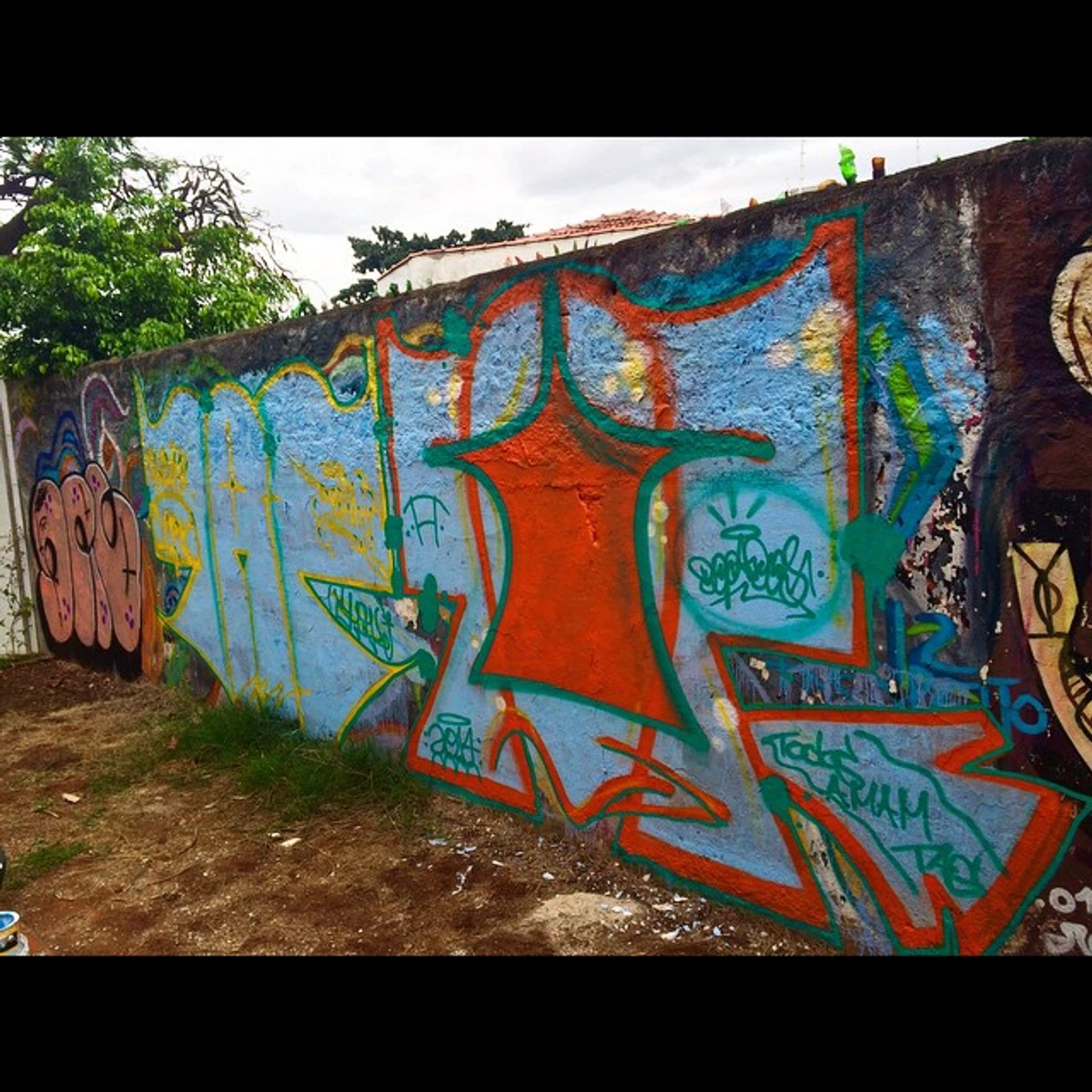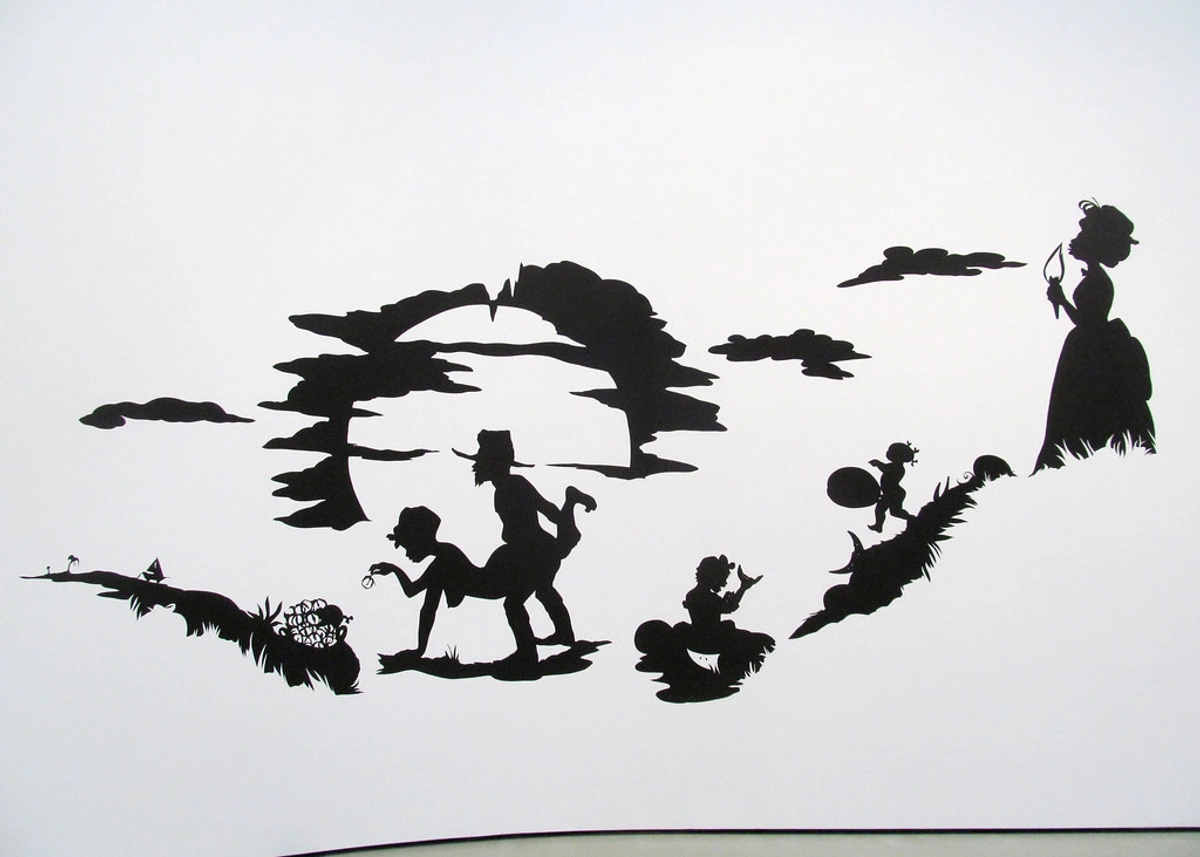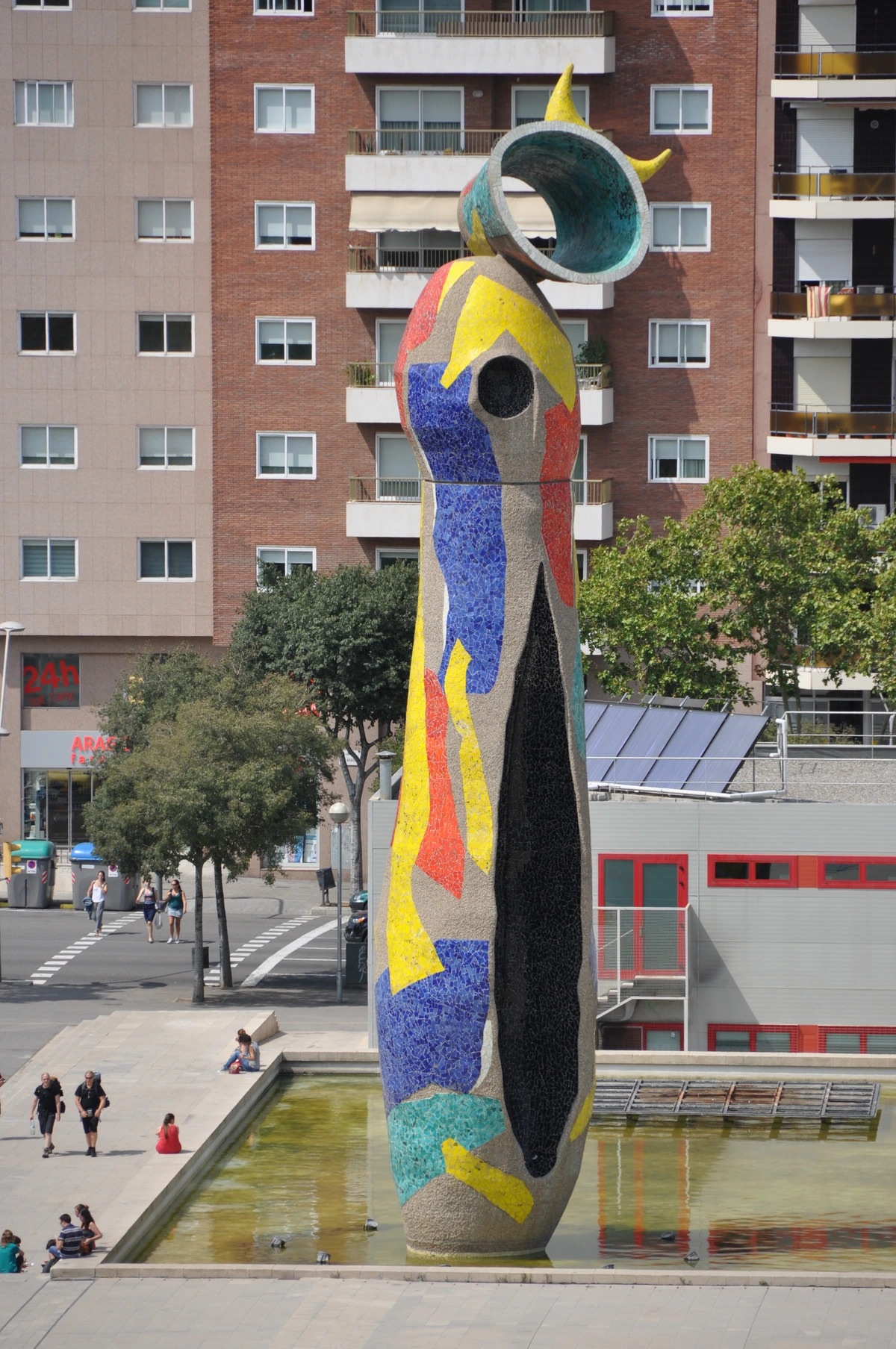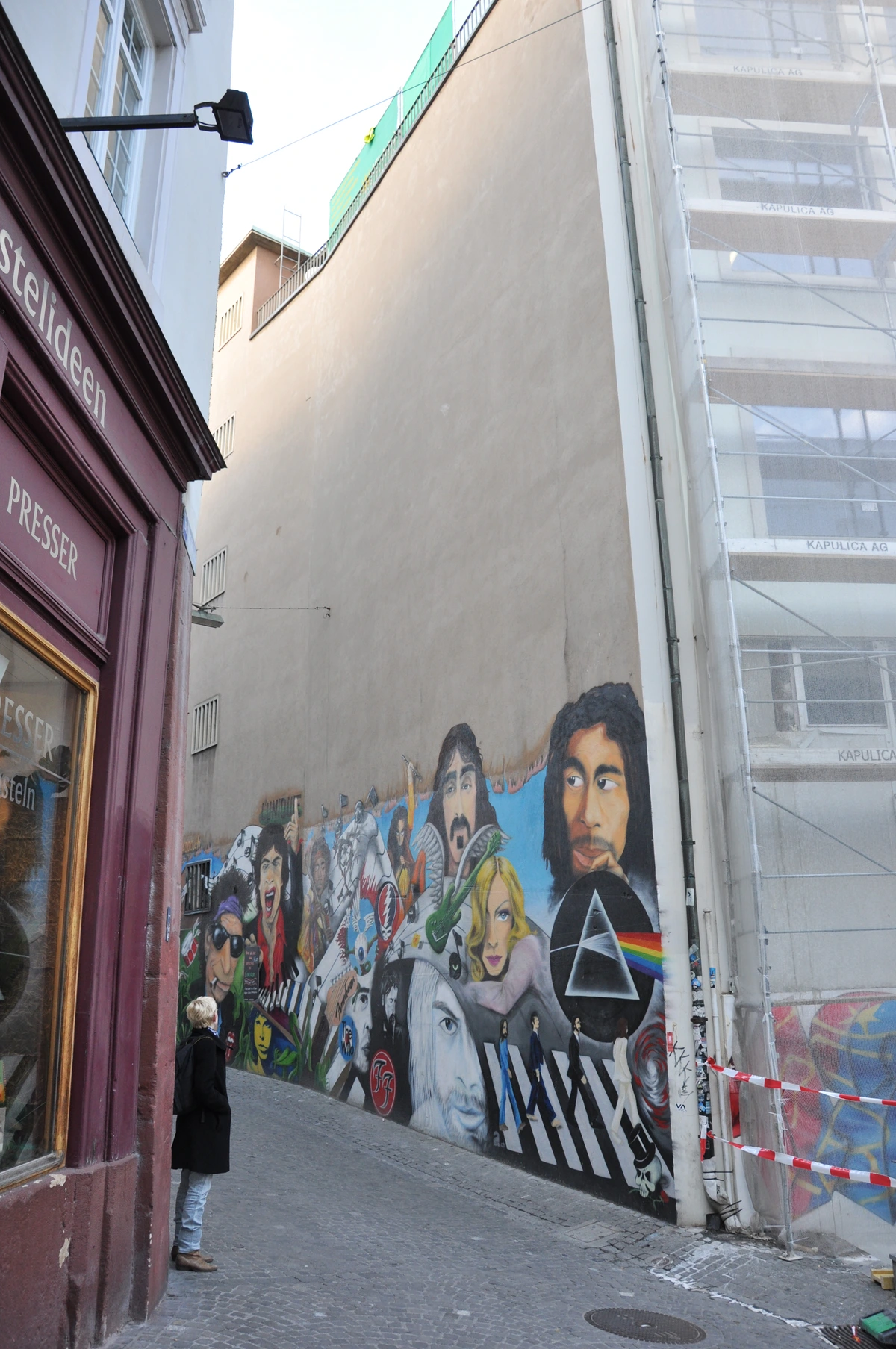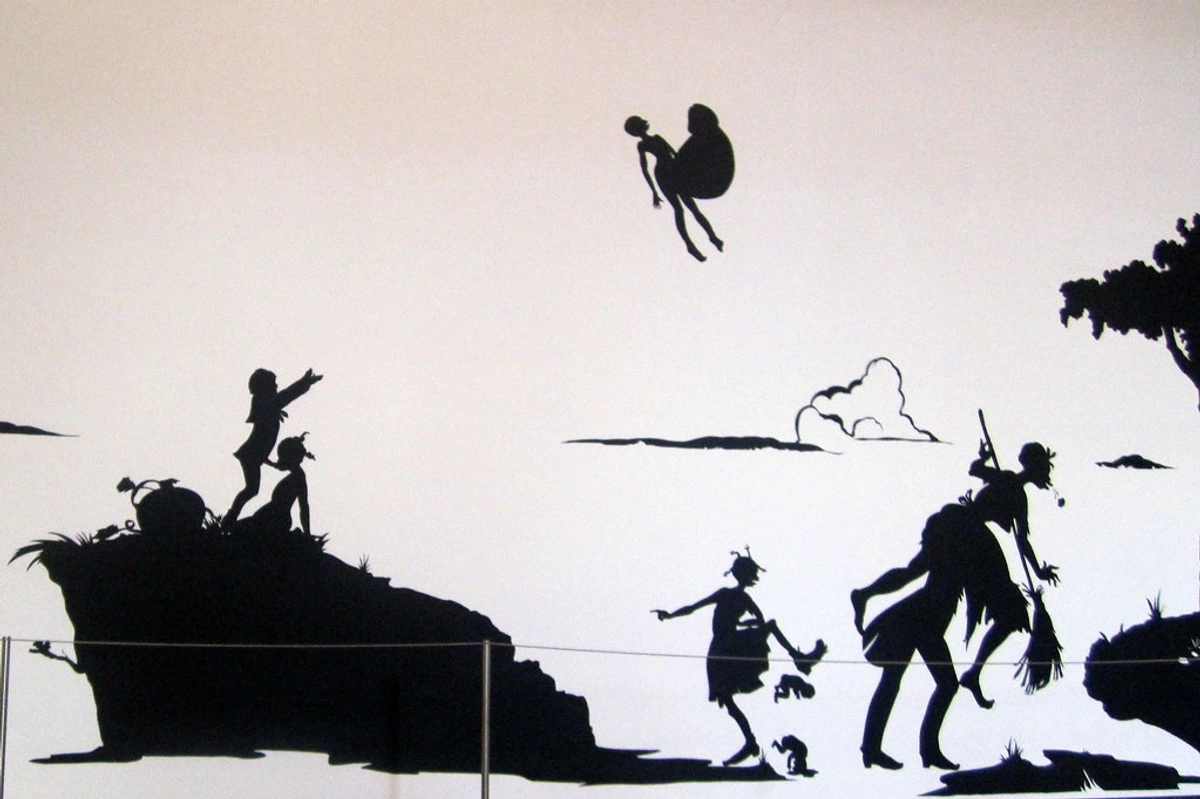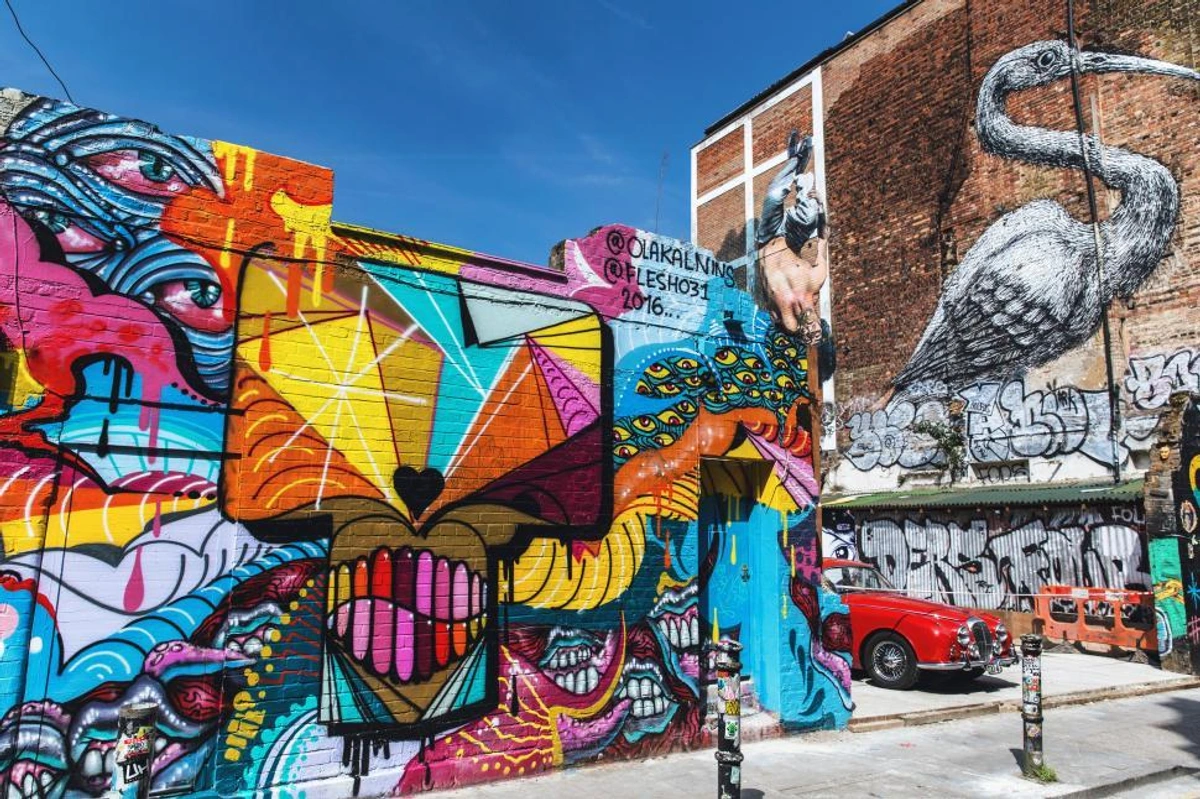An Art Lover's Guide to São Paulo: Beyond the Concrete Jungle
Dive into São Paulo's dynamic art world with my personal guide. From iconic museums like MASP to breathtaking street art, discover why this city is a must for every art enthusiast.
An Art Lover's Guide to São Paulo: Beyond the Concrete Jungle – Unveiling Brazil's Vibrant Artistic Heart and Soul
Welcome, fellow art explorers! If you've landed here, you're likely a kindred spirit, drawn to the vibrant pulse of creativity that thrives in unexpected corners of our world. And let me tell you, São Paulo, Brazil, is precisely one of those corners. I know what you're thinking: a sprawling metropolis, a concrete jungle, an urban beast often associated with business and traffic more than fine art. And you'd be partly right, of course. São Paulo is immense, a city that truly swallows you whole, but it's precisely within this boundless energy that its art scene truly thrives, often in unexpected and breathtaking ways. I remember my first visit, feeling utterly overwhelmed, then utterly captivated by the sheer, unadulterated creative force bubbling beneath the surface. It's not a city that reveals its artistic soul easily; you have to seek it out, peel back the layers, and when you do, oh, the rewards are immense. This guide aims to be the most comprehensive resource for anyone looking to dive deep into this fascinating aspect of the city, much like how I dive into new concepts for my own abstract creations. It's a dynamism that constantly fuels my creative process, making me think about how chaos and order can coexist in art – a fundamental tension often at the heart of São Paulo's urban artistic expressions. In a city like São Paulo, the sheer scale of the urban environment, the historical layers, and the relentless energy all contribute to an artistic dialogue that is both overwhelming and profoundly inspiring. This is a place where every corner can spark a new idea, a different way of seeing, a fresh perspective. But let's be clear: this isn't just a list of places. This is a journey into the very soul of a city expressed through its art, a narrative woven with history, passion, and an undeniable forward momentum. This guide is designed to be your indispensable companion, a roadmap to uncovering São Paulo's artistic treasures, from its world-class museums to its pulsating street art and cutting-edge contemporary galleries. We'll peel back the layers together, revealing a city where every corner holds a story, and every brushstroke, spray-can flourish, or architectural line speaks volumes about its vibrant soul, inviting you to engage with its boundless creativity and perhaps even spark your own. For those seeking a truly immersive art experience, São Paulo delivers a vibrant tapestry of expressions, from its foundational indigenous roots to its bold modernist declarations and its ever-evolving contemporary landscape.
It's a place that buzzes with a raw, undeniable creative force, a stark contrast to some of the more overtly 'pretty' art capitals of the world. Here, art isn't just displayed; it's lived. And for me, someone who finds so much inspiration in the unexpected connections and vibrant chaos of city life, São Paulo offers a unique kind of art inspiration that profoundly resonates with my own abstract work. It’s a dynamism that constantly fuels my creative process, making me think about how chaos and order can coexist in art.
São Paulo: A Canvas of Contrasts
São Paulo’s unique blend of cultures isn’t just a historical footnote; it’s the very DNA of its art scene. To understand the art here, you have to appreciate the incredible journey this city has been on.
São Paulo's history as a hub for industry, commerce, and diverse immigration has profoundly shaped its artistic landscape. Unlike cities that grew around a singular cultural narrative, São Paulo's art scene is a dynamic, multi-layered dialogue between European influences (from Portuguese colonizers to waves of Italian, German, and Eastern European immigrants who brought their own artistic techniques and perspectives, deeply embedding academic traditions and later, avant-garde movements like Cubism and Futurism), African heritage (brought by enslaved populations, giving rise to vibrant artistic forms rooted in spirituality, resilience, and potent narrative storytelling, evident in everything from Candomblé art to contemporary painting and sculpture), Asian traditions (particularly Japanese and Chinese immigration, enriching the city's design and visual arts with unique aesthetics, printmaking techniques, and philosophical perspectives that manifest in everything from landscape painting to architectural minimalism), and the foundational expressions of indigenous peoples (whose ancestral techniques, cosmological visions, and profound connection to nature continue to inspire and inform contemporary artists, often through intricate weaving, ceramics, and body art). This makes exploring art here not just a visual treat, but also a journey into the complex social fabric of Brazil itself, much like understanding the nuanced differences between modern vs. contemporary art helps us appreciate their unique contributions. It's a living tapestry where each thread is distinct, yet intricately woven into a uniquely São Paulo aesthetic, constantly redefining what Brazilian art means.
The Modernist Revolution: Semana de Arte Moderna de 1922
Before we delve into specific traditions, it's impossible to talk about the roots of São Paulo's modern art without mentioning the Semana de Arte Moderna de 1922 (Modern Art Week of 1922). Held in the Municipal Theatre, this pivotal event challenged the academic and conservative artistic norms of the time, ushering in a new era of Brazilian modernism. It was a bold, sometimes chaotic, explosion of new ideas in literature, music, and visual arts, deeply influenced by European avant-garde movements but always striving for a distinctly Brazilian identity. Key figures like Mário de Andrade, Oswald de Andrade, and artists such as Anita Malfatti and Di Cavalcanti championed a cultural anthropophagy, metaphorically "devouring" European influences to create something uniquely Brazilian – a creative act of cultural synthesis. Think of it as São Paulo's artistic declaration of independence! This seminal event not only introduced radical new forms but also ignited a profound search for a national artistic identity, paving the way for the vibrant, diverse art scene we see today. It encouraged artists to look inwards at their own culture and heritage rather than solely outwards for inspiration, shaping a uniquely national artistic discourse that resonates with the broader global movements of modern art. This audacious spirit continues to define the city's approach to artistic expression, much like how artists today continue to push boundaries and redefine what contemporary art can be, constantly questioning, challenging, and evolving. The reverberations of this week set the stage for subsequent movements, including the influential Concrete Art movement, which São Paulo became a major hub for in the mid-20th century, focusing on geometric abstraction and rational structures.
A Tapestry of Traditions: Indigenous, African, and European Threads
From the foundational expressions of its indigenous peoples to the profound impact of African traditions carried by enslaved populations, and the diverse artistic currents introduced by European immigrants, São Paulo's art is a testament to cultural syncretism – a truly fascinating melting pot of ideas and aesthetics. This isn't just a historical footnote; it's a living, breathing influence that you'll see manifest in everything from traditional crafts to cutting-edge contemporary installations. For example, many indigenous communities, such as the Guarani and the Krenak, continue to produce intricate basketry, pottery, and body adornments that carry deep spiritual and cultural significance. These forms are not static; they inform and inspire contemporary Brazilian artists, who often incorporate traditional motifs, natural materials, and ancestral narratives into their work, bridging ancient practices with modern expressions, creating a powerful sense of continuity. This makes exploring art here not just a visual treat, but also a journey into the complex social fabric of Brazil itself, much like understanding the nuanced differences between modern vs. contemporary art helps us appreciate their unique contributions. You'll find art that speaks of spiritual heritage, resilience, celebration, and protest, all woven into a unique Brazilian aesthetic that constantly redefines itself. The profound influence of African heritage, brought to Brazil through the transatlantic slave trade, is evident in art forms linked to Candomblé and Umbanda religions, in the vibrant colors and rhythmic patterns of capoeira (which is itself a performative art form), and in the powerful narratives of resistance and identity expressed through painting, sculpture, and textile art. Many contemporary African-Brazilian artists use their work to explore themes of ancestry, memory, and social justice, creating a powerful and poignant dialogue within the city's art scene. Meanwhile, the strong influx of Japanese immigrants, particularly in the early 20th century, brought with it a rich tradition of woodblock printing, calligraphy, and minimalist aesthetics, which subtly influenced local design and visual arts, especially in neighborhoods like Liberdade. This layering of influences creates a depth that few other cities can match, making every artistic discovery a journey through history and identity, and offering a rich, multifaceted view of humanity itself.
Imagine a city the size of a small country, a melting pot of cultures, ideas, and relentless innovation. That's São Paulo. It’s a place where towering skyscrapers meet historic colonial buildings, where sophisticated galleries sit a stone's throw from a vibrant street art scene. It’s this very juxtaposition that makes São Paulo so compelling for anyone with an artistic eye. It’s a city that challenges your perceptions and constantly offers new visual narratives. From its groundbreaking architecture to its vibrant street art, São Paulo serves as a dynamic backdrop for both established and emerging artistic voices. It's truly a microcosm of global artistic trends filtered through a uniquely Brazilian lens, constantly evolving and surprising.
The Grand Institutions: Where History Meets Modernity
Let's be honest, any art lover's journey into a new city often starts with its venerable institutions. São Paulo certainly doesn't disappoint, offering a mix of architectural marvels and world-class collections that span centuries and continents. It's where you can trace the historical arc of art, seeing how classical foundations laid the groundwork for modern and contemporary expressions.
MASP: A Masterpiece in Itself
If there’s one museum that embodies São Paulo’s daring spirit, it's the Museu de Arte de São Paulo (MASP). Its iconic brutalist architecture, designed by the visionary Lina Bo Bardi, is an artwork in itself. Suspended 8 meters above ground on massive red pillars, it creates this incredible open space underneath for public use. I mean, who does that? It’s genius! You feel like you're stepping into the future, even though the building has been around since the 60s. This audacious design by one of Brazil's most influential architects truly sets the stage for the art within.
Inside, the permanent collection is displayed on clear glass easels, making the art appear to float, almost disembodied from the wall. It’s such an unconventional and engaging way to view masterpieces from the likes of Renoir, Van Gogh, Picasso, and significant Brazilian artists. This unique display method, which Lina Bo Bardi designed, encourages a profound, unmediated dialogue between the viewer and the art, stripping away traditional hierarchies and allowing each piece to stand on its own terms, free from the usual chronological or thematic constraints. It truly challenges your perception and invites a more intimate, personal interaction. The sheer scale and quality of the collection are astounding, often surprising visitors who might not expect such European masters in Brazil. Beyond its European treasures, MASP also holds a significant collection of Brazilian art, showcasing the nation's artistic evolution and its engagement with international movements, from colonial portraiture to contemporary experiments. Don't forget to check their rotating schedule of temporary exhibitions, which often bring cutting-edge contemporary art and historical surveys to the forefront, making every visit a fresh experience. I find this approach incredibly refreshing, challenging the very notion of how we interact with art, much like how abstract art challenges conventional representation by asking us to look deeper. The museum frequently hosts groundbreaking retrospectives and thematic shows that contextualize Brazilian art within global movements, making it a critical site for art historical study and contemporary dialogue. It's a place where history and modernity collide, offering a constantly evolving perspective on the art world. For many, MASP is not just a museum, but a pilgrimage site for understanding the very soul of Brazilian modern art and its dialogue with the world. Its bold vision, both in architecture and curation, continues to inspire and challenge, truly embodying the city's artistic daring. Beyond its collections, MASP is deeply committed to public engagement and education, offering a rich calendar of lectures, workshops, and guided tours designed to make art accessible to all. Its free public space under the 'Vão Livre' is a testament to its civic-minded design, hosting weekly antique markets, spontaneous performances, and political rallies, seamlessly blending high art with everyday urban life. This constant interaction between the institution and the public is a powerful example of art's role in community building, proving that great art is truly for everyone. MASP also actively engages in research and conservation, playing a vital role in preserving and disseminating Brazilian artistic heritage.
 https://upload.wikimedia.org/wikipedia/commons/7/7f/MASP_-Museu_de_Arte_de_S%C3%A3o_Paulo%283407312147%29.jpg, https://creativecommons.org/licenses/by/2.0
https://upload.wikimedia.org/wikipedia/commons/7/7f/MASP_-Museu_de_Arte_de_S%C3%A3o_Paulo%283407312147%29.jpg, https://creativecommons.org/licenses/by/2.0
Pinacoteca do Estado de São Paulo: A Journey Through Brazilian Art
Then there's the Pinacoteca do Estado de São Paulo, an absolute gem. Housed in a beautifully restored 19th-century building, it’s a stunning example of industrial architecture transformed into an elegant art space. Think exposed brick, soaring ceilings, and natural light flooding through glass skylights. It feels so grounded, yet so expansive, embodying a quiet grandeur that allows the art to speak. The building itself, designed by Ramos de Azevedo, has a rich history, once serving as the city's School of Arts and Crafts, and its neoclassical facade, combined with the innovative industrial renovation led by acclaimed architect Paulo Mendes da Rocha in the late 20th century, creates a stunning dialogue between past and present. The interplay of exposed brickwork, natural light filtering through expansive glass ceilings, and soaring internal spaces offers a unique atmosphere that contrasts beautifully with MASP's brutalist aesthetic. This transformation is a work of art in itself, providing an elegant and expansive canvas for the Brazilian masterpieces housed within.
This museum focuses primarily on Brazilian art from the 19th century to contemporary works, offering an unparalleled insight into the country’s artistic development. Its collection boasts seminal works by key Brazilian artists, showcasing the evolution of national artistic identity. The Pinacoteca actually spans two buildings: the main Pinacoteca Luz, which I've just described, and Pinacoteca Estação, located nearby in a former railway warehouse. Pinacoteca Estação often hosts more experimental contemporary art and exhibitions, offering yet another layer to São Paulo's diverse art scene, truly showcasing the breadth of Brazilian creative expression. For me, exploring the Pinacoteca felt like a history lesson told through paint and sculpture, a truly immersive experience that grounds you in the local culture. It’s a gentle counterpoint to MASP’s bold modernity, and I love that contrast. The museum's curatorial approach often highlights the social and political dimensions of Brazilian art, offering a nuanced perspective on national identity. Through its extensive collection, you can trace the evolution of Brazilian art from colonial times to the groundbreaking modernism of the 20th century, and into the diverse contemporary landscape, creating a dialogue with broader art movements such as Cubism and Surrealism as they were interpreted locally. It’s a profound journey through Brazilian identity, artistry, and evolution, much like understanding the evolution of abstract art helps us grasp its contemporary forms. The Pinacoteca Estação, in particular, has become a hotbed for experimental installations and performances – I've seen everything from immersive soundscapes to thought-provoking video art and large-scale textile works here – proving that even the most venerable institutions are keenly tuned into the contemporary pulse of the city. I remember feeling a profound sense of connection here, tracing the nation's artistic story through its triumphs and its struggles, a narrative that feels both deeply personal and universally resonant, much like how the best art speaks to us across time and culture. It’s an essential experience for anyone wanting to truly grasp the nuances of Brazilian artistic expression. They also host a vibrant schedule of educational programs and public discussions, further enriching the visitor experience.
https://upload.wikimedia.org/wikipedia/commons/8/8d/Pinacoteca_do_Estado_de_S%C3%A3o_Paulo%2C_Brasil_-_interiores.JPG, http://creativecommons.org/licenses/by-sa/3.0
Other Noteworthy Museums: A Deeper Dive
While MASP and Pinacoteca are the headliners, São Paulo boasts many other fantastic art spaces, each with its own unique focus. These institutions contribute significantly to the city's rich cultural tapestry, offering specialized insights and diverse perspectives. It’s like having an entire palette of colors, each museum offering a distinct shade to the city’s artistic canvas.
To help you navigate, I’ve compiled a quick overview of some of these essential cultural institutions:
Museum | Primary Focus | Key Highlight | Location (General Area) |
|---|---|---|---|
| Museu Afro Brasil | African-Brazilian Culture & Art | Deep dive into African influence on Brazilian identity, extensive collection of religious artifacts and contemporary African diaspora art | Ibirapuera Park |
| Museu da Imagem e do Som (MIS) | Photography, Cinema, New Media, Music | Interactive installations, cutting-edge film screenings, music festivals, and a significant archive of Brazilian audiovisual memory | Jardins |
| Museu de Arte Moderna (MAM) | Modern & Contemporary Brazilian Art | Expansive sculpture garden, strong educational programs | Ibirapuera Park |
| Instituto Tomie Ohtake | Experimental Contemporary Art & Design | Bold architecture, cutting-edge exhibitions (often Japan/Brazil focus) | Pinheiros |
| Centro Cultural Banco do Brasil (CCBB) | Multidisciplinary Cultural Exhibitions | High-profile international and historical art shows, diverse cultural events | Historic City Center |
| SESC (Serviço Social do Comércio) | Broad Cultural Programming | Multiple units across the city, known for diverse exhibitions, theater, music, and educational activities | Various locations |
| Japan House São Paulo | Contemporary Japan & Cultural Exchange | Blending traditional & modern Japanese design, art, and technology | Avenida Paulista (Jardins) |
| Museu de Arte Contemporânea (MAC USP) | Modern & Contemporary Art (large collection) | Stunning panoramic city views from rooftop, significant collection of European modernism (Picasso, Chagall) and Brazilian contemporary art, housed in a magnificent building originally designed by Oscar Niemeyer | Ibirapuera Park (near Bienal) |
| Museu de Arte Brasileira da FAAP | Brazilian Art & Design (historical & contemporary) | Focus on Brazilian artistic production, especially 20th-century movements; beautiful collection of paintings, sculptures, and decorative arts | Higienópolis |
| Museu de Arte Sacra (MAS) | Sacred Art | Extensive collection of religious art, showcasing colonial and baroque influences | Luz (near Pinacoteca) |
This diverse array of institutions ensures that no matter your specific artistic interest, São Paulo has a space dedicated to exploring it, making your art journey truly multifaceted. Beyond traditional mediums, the city also has a thriving scene for photography and film, with institutions like Museu da Imagem e do Som (MIS) at the forefront, showcasing local and international works that capture the city's complex narratives through a different lens.
Focusing the Lens: Photography and Design Institutions
Beyond the broad strokes of painting and sculpture, São Paulo also offers specialized institutions for those with a keen eye for photography, film, and design. The Museu da Imagem e do Som (MIS), as noted in our table, is a vibrant hub dedicated to these dynamic visual arts. It's not just a repository; it's a living space where interactive exhibitions, cutting-edge film screenings, and immersive sound installations constantly push the boundaries of artistic expression. For me, exploring the interplay of light and shadow, the narrative power of a single frame, or the immersive quality of soundscapes, often provides fresh perspectives that feed directly into my abstract work, influencing my approach to light and composition. And for those fascinated by form and function, the Instituto Tomie Ohtake stands as a beacon of experimental contemporary art and design, often showcasing the intricate connections between Japanese and Brazilian aesthetics through its bold, sculptural architectural form and thought-provoking exhibitions. Its undulating facade is an artwork in itself, a perfect prelude to the innovative works you'll find inside, often highlighting new talent in both Brazil and Japan.
The Pulse of Contemporary Art: Bienal and Beyond
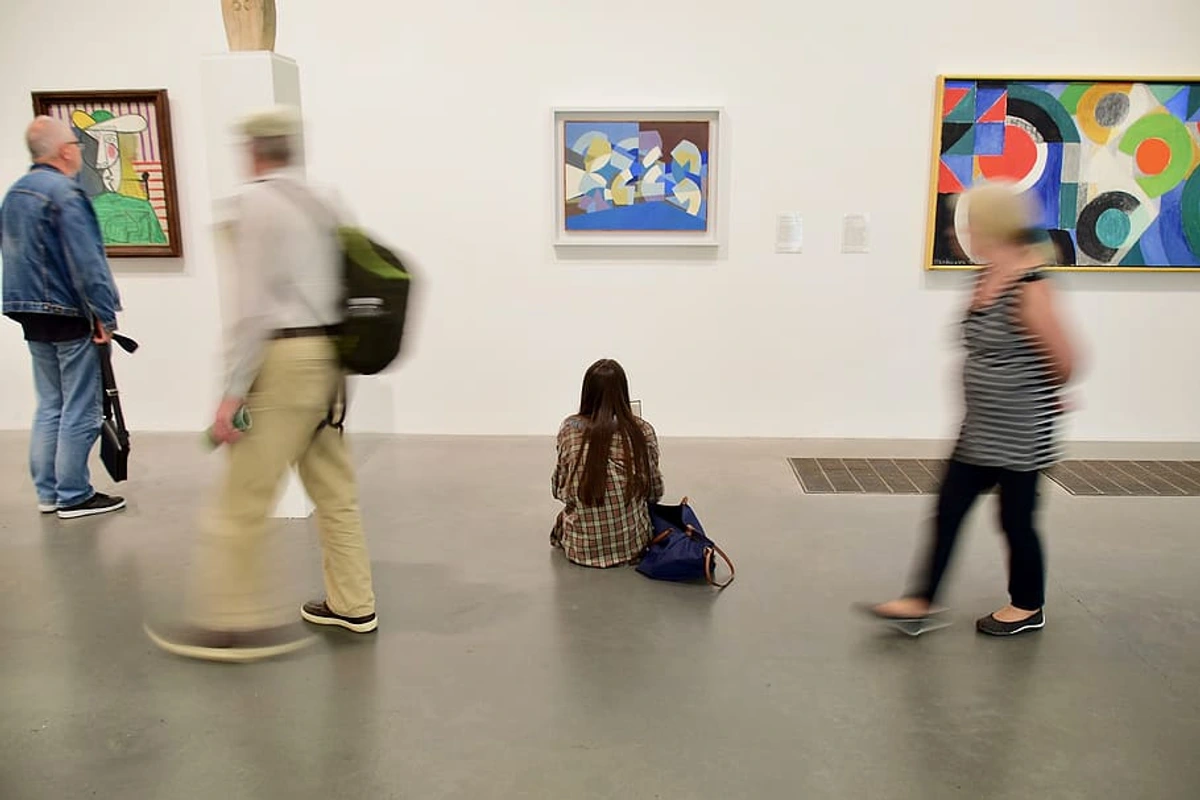
Beyond the grand museums, São Paulo is a powerhouse for contemporary art, constantly pushing boundaries and fostering new talent. It's a scene that thrives on innovation and a fearless spirit of exploration, much like the process of creating abstract paintings. I've often felt a profound connection here, a sense that the city itself is an artist, constantly creating and reinventing its visual narrative.
São Paulo Bienal: A Global Stage
The São Paulo Bienal is the second oldest art biennial in the world (after Venice, of course) and a monumental event on the international art calendar. Held in the iconic Ciccillo Matarazzo Pavilion within Ibirapuera Park – a stunning modernist structure designed by Oscar Niemeyer – it transforms the city every two years into a global contemporary art hub. If your visit aligns with the Bienal, you absolutely must go. It's an incredible opportunity to see cutting-edge work from artists worldwide and a fantastic snapshot of where contemporary art is heading. The Bienal's history dates back to 1951, making it a pivotal force in the international art circuit, often setting trends and introducing groundbreaking artists to a global audience. It's more than an exhibition; it's a profound cultural event that reshapes the city's artistic landscape every two years, influencing discussions and inspiring new movements across the globe. It's a crucial platform for exploring new artistic languages, often challenging conventional notions of art and society. Much like understanding the lineage of abstract art helps us grasp its contemporary forms, recognizing the Bienal's historical impact is key to appreciating São Paulo's position on the global art stage, influencing new generations of creators, including those pushing the boundaries of abstract expressionism. The Bienal often tackles pressing global issues through art, fostering critical dialogue around themes of sustainability, social justice, and identity, thereby pushing the boundaries of what an exhibition can be. It's truly a global art barometer, and an experience that will undoubtedly broaden your perspective on the role of art in society. The Bienal often serves as a crucial platform for socio-political discourse, presenting works that challenge conventions, spark debates, and reflect on Brazil's complex history and contemporary challenges. It's a place where artists, critics, and the public engage in a vibrant dialogue about identity, environment, and global interconnectedness, deeply influencing the trajectory of contemporary art in Brazil and beyond – an unmissable event that I find endlessly inspiring. For instance, recent editions have explored themes of ancestral futurisms, decolonial narratives, and the impact of technology on human experience, making it a critical barometer of global artistic concerns.
The Gallery Scene: Discovering Tomorrow's Masters
São Paulo’s contemporary art galleries are where you'll find the true pulse of the local and emerging art scene. Neighborhoods like Jardins, Vila Madalena, Pinheiros, and Itaim Bibi are packed with them, showcasing everything from abstract expressionism to installation art, photography, and conceptual works. Each district has its own vibe, with Jardins leaning towards more established names and Vila Madalena offering a platform for experimental and younger artists. It's where I always feel a kinship with the artists, seeing the raw emotion and innovation, a deep connection to the creative spirit. If you're interested in collecting emerging abstract art or even buying art from local artists, these galleries are a goldmine. You never know, you might stumble upon the next big name or find a piece that truly speaks to your soul, much like my own process of visual expression in my studio. This vibrant ecosystem of galleries, from established names like Fortes D’Aloia & Gabriel and Mendes Wood DM, to more experimental spaces like Galeria Leme and Pivô, provides a critical platform for dialogue and discovery. Visiting them offers an intimate glimpse into the city’s artistic vanguard, a dynamic landscape that is constantly shifting and redefining itself. You'll find everything from cutting-edge video installations and mixed-media sculptures to vibrant canvases that echo the city's energy. Don't be shy about striking up conversations with gallerists; their passion for the artists they represent is infectious, and they're often a wealth of information about the local scene, even offering insights into emerging trends or private collections. For serious collectors, engaging with local art advisors (and perhaps checking out a QA with an art advisor) can also open doors to exclusive viewings and a deeper understanding of the Brazilian art market.
The Evolving Gallery Landscape: Key Spaces and Trends
While the districts themselves have a general vibe, São Paulo's gallery scene is ever-evolving. Here, you'll find spaces that have consistently championed cutting-edge art and emerging voices. Galleries like Fortes D’Aloia & Gabriel (with locations in both Jardins and Barra Funda) are renowned for their strong roster of established and mid-career Brazilian and international artists, often participating in major global art fairs. Mendes Wood DM, another internationally recognized gallery, presents a compelling program with a focus on conceptual and experimental art, and has a strong presence at international biennials. For a more avant-garde experience, explore spaces like Galeria Vermelho in the downtown area, known for its bold installations and performance art, or discover the burgeoning independent scene in areas like Barra Funda, which is quickly becoming a new art hub with artist studios and smaller galleries like Central Galeria.
Artist Residencies and Independent Art Spaces
Beyond traditional galleries, São Paulo fosters a thriving ecosystem of artist residencies and independent art spaces. These often serve as incubators for new ideas, offering artists time and resources to experiment outside commercial pressures. Places like Pivô, located in the iconic Copan Building, are prime examples, hosting exhibitions, public programs, and artists in residence. Other notable independent spaces include Ateliê 397 and Casa Triângulo, which have historically played a crucial role in promoting experimental work. Keep an eye out for smaller, artist-run initiatives and pop-up exhibitions in neighborhoods like Barra Funda or Bom Retiro, which are becoming new hubs for experimental art. I find these spaces incredibly exciting, as they represent the raw, unfiltered pulse of the art world, where tomorrow's trends are often born.
Navigating São Paulo's Gallery Districts
Each neighborhood offers a distinct flavor of the contemporary art scene:
- Jardins: Often home to more established galleries showcasing renowned Brazilian and international artists. Expect polished spaces and significant works, with a focus on investment-grade art.
- Vila Madalena: Known for its more bohemian and experimental vibe, with galleries that often champion emerging artists and cutting-edge contemporary practices. It's a great spot to find vibrant, accessible art.
- Pinheiros: A rising star in the gallery scene, offering a mix of established and innovative spaces, often with a focus on younger talent and multidisciplinary approaches. You’ll find a lively mix of art and independent design shops here.
- Barra Funda: Rapidly becoming an important art district, home to both established and new galleries, as well as artist studios. It's raw, industrial, and brimming with creative energy.
- Itaim Bibi: Features a selection of high-end galleries and showrooms, often blending art with design and luxury, catering to a more affluent clientele.
I always recommend dedicating a full day to exploring one or two of these districts. Pop into smaller, independent spaces; you never know what hidden gem you might uncover, or what new perspective might spark your own creative fire. Many galleries also host evening openings on specific days, offering a social and engaging way to experience the art scene.
Beyond the grand museums, São Paulo is a powerhouse for contemporary art, constantly pushing boundaries and fostering new talent. It's a scene that thrives on innovation and a fearless spirit of exploration, much like the process of creating abstract paintings. I've often felt a profound connection here, a sense that the city itself is an artist, constantly creating and reinventing its visual narrative.
São Paulo Bienal: A Global Stage
The São Paulo Bienal is the second oldest art biennial in the world (after Venice, of course) and a monumental event on the international art calendar. Held in the iconic Ciccillo Matarazzo Pavilion within Ibirapuera Park – a stunning modernist structure designed by Oscar Niemeyer – it transforms the city every two years into a global contemporary art hub. If your visit aligns with the Bienal, you absolutely must go. It's an incredible opportunity to see cutting-edge work from artists worldwide and a fantastic snapshot of where contemporary art is heading. The Bienal's history dates back to 1951, making it a pivotal force in the international art circuit, often setting trends and introducing groundbreaking artists to a global audience. It's more than an exhibition; it's a profound cultural event that reshapes the city's artistic landscape every two years, influencing discussions and inspiring new movements across the globe. It's a crucial platform for exploring new artistic languages, often challenging conventional notions of art and society. Much like understanding the lineage of abstract art helps us grasp its contemporary forms, recognizing the Bienal's historical impact is key to appreciating São Paulo's position on the global art stage, influencing new generations of creators, including those pushing the boundaries of abstract expressionism. The Bienal often tackles pressing global issues through art, fostering critical dialogue around themes of sustainability, social justice, and identity, thereby pushing the boundaries of what an exhibition can be. It's truly a global art barometer, and an experience that will undoubtedly broaden your perspective on the role of art in society. The Bienal often serves as a crucial platform for socio-political discourse, presenting works that challenge conventions, spark debates, and reflect on Brazil's complex history and contemporary challenges. It's a place where artists, critics, and the public engage in a vibrant dialogue about identity, environment, and global interconnectedness, deeply influencing the trajectory of contemporary art in Brazil and beyond – an unmissable event that I find endlessly inspiring. For instance, recent editions have explored themes of ancestral futurisms, decolonial narratives, and the impact of technology on human experience, making it a critical barometer of global artistic concerns.
The Gallery Scene: Discovering Tomorrow's Masters
São Paulo’s contemporary art galleries are where you'll find the true pulse of the local and emerging art scene. Neighborhoods like Jardins, Vila Madalena, Pinheiros, and Itaim Bibi are packed with them, showcasing everything from abstract expressionism to installation art, photography, and conceptual works. Each district has its own vibe, with Jardins leaning towards more established names and Vila Madalena offering a platform for experimental and younger artists. It's where I always feel a kinship with the artists, seeing the raw emotion and innovation, a deep connection to the creative spirit. If you're interested in collecting emerging abstract art or even buying art from local artists, these galleries are a goldmine. You never know, you might stumble upon the next big name or find a piece that truly speaks to your soul, much like my own process of visual expression in my studio. This vibrant ecosystem of galleries, from established names like Fortes D’Aloia & Gabriel and Mendes Wood DM, to more experimental spaces like Galeria Leme and Pivô, provides a critical platform for dialogue and discovery. Visiting them offers an intimate glimpse into the city’s artistic vanguard, a dynamic landscape that is constantly shifting and redefining itself. You'll find everything from cutting-edge video installations and mixed-media sculptures to vibrant canvases that echo the city's energy. Don't be shy about striking up conversations with gallerists; their passion for the artists they represent is infectious, and they're often a wealth of information about the local scene, even offering insights into emerging trends or private collections. For serious collectors, engaging with local art advisors (and perhaps checking out a QA with an art advisor) can also open doors to exclusive viewings and a deeper understanding of the Brazilian art market.
The Evolving Gallery Landscape: Key Spaces and Trends
While the districts themselves have a general vibe, São Paulo's gallery scene is ever-evolving. Here, you'll find spaces that have consistently championed cutting-edge art and emerging voices. Galleries like Fortes D’Aloia & Gabriel (with locations in both Jardins and Barra Funda) are renowned for their strong roster of established and mid-career Brazilian and international artists, often participating in major global art fairs. Mendes Wood DM, another internationally recognized gallery, presents a compelling program with a focus on conceptual and experimental art, and has a strong presence at international biennials. For a more avant-garde experience, explore spaces like Galeria Vermelho in the downtown area, known for its bold installations and performance art, or discover the burgeoning independent scene in areas like Barra Funda, which is quickly becoming a new art hub with artist studios and smaller galleries like Central Galeria.
Artist Residencies and Independent Art Spaces
Beyond traditional galleries, São Paulo fosters a thriving ecosystem of artist residencies and independent art spaces. These often serve as incubators for new ideas, offering artists time and resources to experiment outside commercial pressures. Places like Pivô, located in the iconic Copan Building, are prime examples, hosting exhibitions, public programs, and artists in residence. Other notable independent spaces include Ateliê 397 and Casa Triângulo, which have historically played a crucial role in promoting experimental work. Keep an eye out for smaller, artist-run initiatives and pop-up exhibitions in neighborhoods like Barra Funda or Bom Retiro, which are becoming new hubs for experimental art. I find these spaces incredibly exciting, as they represent the raw, unfiltered pulse of the art world, where tomorrow's trends are often born.
Navigating São Paulo's Gallery Districts
Each neighborhood offers a distinct flavor of the contemporary art scene:
- Jardins: Often home to more established galleries showcasing renowned Brazilian and international artists. Expect polished spaces and significant works, with a focus on investment-grade art.
- Vila Madalena: Known for its more bohemian and experimental vibe, with galleries that often champion emerging artists and cutting-edge contemporary practices. It's a great spot to find vibrant, accessible art.
- Pinheiros: A rising star in the gallery scene, offering a mix of established and innovative spaces, often with a focus on younger talent and multidisciplinary approaches. You’ll find a lively mix of art and independent design shops here.
- Barra Funda: Rapidly becoming an important art district, home to both established and new galleries, as well as artist studios. It's raw, industrial, and brimming with creative energy.
- Itaim Bibi: Features a selection of high-end galleries and showrooms, often blending art with design and luxury, catering to a more affluent clientele.
I always recommend dedicating a full day to exploring one or two of these districts. Pop into smaller, independent spaces; you never know what hidden gem you might uncover, or what new perspective might spark your own creative fire. Many galleries also host evening openings on specific days, offering a social and engaging way to experience the art scene.
The City as Gallery: São Paulo's Vibrant Street Art
Here’s where São Paulo truly differentiates itself. The street art scene isn’t just good; it’s phenomenal. The city itself feels like an enormous, ever-changing gallery. You'll find everything from massive, intricate murals to witty stencils and tags adorning buildings, alleys, and even train cars. This isn't just decoration; much of São Paulo's street art carries powerful social and political messages, reflecting the city's diverse narratives and struggles. You'll often find imagery commenting on environmental destruction, celebrating Afro-Brazilian heritage, or critiquing social inequality and the stark contrasts within the city's wealth distribution. It's art that truly comes alive, transforming urban spaces and sparking conversations, a constant, democratic exhibition for all to see. It’s a powerful, unedited voice that often feels more immediate and raw than anything you'll find in a gallery. Themes often explored include social inequality, indigenous rights, environmental concerns, and historical memory, giving voice to marginalized communities and prompting public reflection on Brazil's complex socio-political landscape. Artists often use allegorical figures, vibrant portraits of everyday people, or direct textual messages to convey their powerful statements, turning passive observation into active dialogue.
Beco do Batman: An Open-Air Museum
Beco do Batman (Batman Alley) in Vila Madalena is legendary. It's an explosion of color and creativity, with every inch of wall space covered in rotating street art. It's a vibrant, dynamic place that perfectly captures the city's artistic energy. But honestly, you don't even need to go to a specific spot; just walk through neighborhoods like Vila Madalena, Pinheiros, or the downtown area, and you'll be constantly surprised by the quality and sheer volume of public art. For someone like me, who experiments with color and texture in my own abstract creations, seeing the boldness and scale of São Paulo's street art is always incredibly inspiring. It’s art for everyone, accessible and unapologetic. Beyond Beco do Batman, areas like Avenida 23 de Maio feature massive, officially commissioned murals, while districts like Cambuci and the wider Vila Madalena area offer a more organic, evolving tapestry of urban artworks. The Minhocão (Elevated Highway President Costa e Silva), especially when closed to traffic on Sundays, transforms into a vast linear park and an unparalleled canvas for large-scale murals and graffiti, turning a concrete artery into a vibrant promenade. In Liberdade, São Paulo's Japanese district, you'll discover unique street art influenced by manga, calligraphy, and traditional Japanese motifs, offering a fascinating cultural fusion that I find utterly captivating. The Historic City Center also holds a wealth of impactful street art, often with strong political and historical undertones, sometimes juxtaposed against grand colonial architecture, creating a powerful visual juxtaposition. It’s a truly immersive experience that speaks to the raw, unadulterated creative spirit of the city. You might even find yourself inspired to explore [exploring-texture:-my-favorite-techniques-for-adding-depth-to-abstract-paintings] in your own work after seeing such vibrant examples of urban texture and layered narratives.
Beyond Beco do Batman: Artists & Movements
While the sheer scale of street art can feel overwhelming, certain artists have truly left their mark, influencing styles and conveying powerful messages. Keep an eye out for works by the Os Gêmeos (The Twins), whose distinctive yellow-skinned characters and surreal narratives are instantly recognizable and globally acclaimed. Their work often blends folklore, dreams, and urban life into compelling, large-scale murals. Other influential artists like Eduardo Kobra are famous for their vibrant, kaleidoscopic murals, often depicting historical figures or promoting peace and environmental messages through a unique geometric style. Beyond these, artists such as Nunca (Francisco Rodrigues da Silva), known for his intricate, indigenous-inspired patterns and figures, and Vitché (Victor Hugo Valadão), whose work often features mythical creatures and social commentary, have also profoundly shaped the city's street art identity. Their work transforms mundane surfaces into breathtaking public art, making the city a living canvas that speaks to the power of street art as a medium for social commentary and aesthetic wonder, truly reflecting São Paulo’s diverse cultural tapestry.
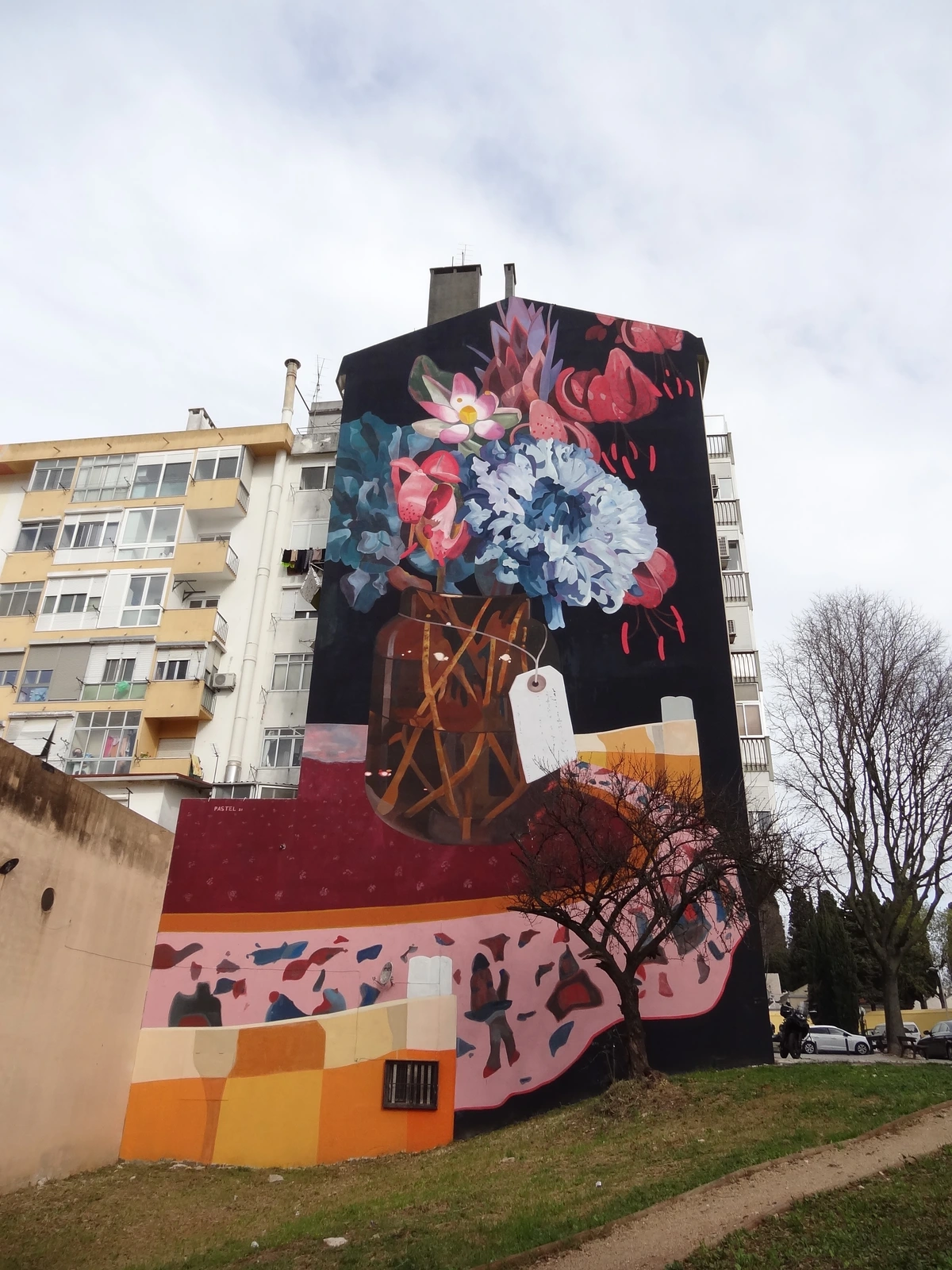
Other Street Art Hotspots
Guided Street Art Adventures: Unlocking São Paulo's Outdoor Galleries
To truly delve into the rich narratives and hidden gems of São Paulo's street art scene, I highly recommend considering a guided tour. Local art guides possess an intimate knowledge of the city's ever-changing murals, the stories behind the artists, and the cultural contexts of the works. They can lead you to less-trafficked areas, introduce you to emerging talents, and provide invaluable insights into the social and political messages embedded in the art. It's a fantastic way to navigate the sprawling urban canvas and gain a deeper appreciation for this democratic art form. (For more on tours, check out our FAQ below on guided art tours!).
While Beco do Batman is the most famous, São Paulo's street art extends far beyond. The area around the Minhocão (Elevated Highway President Costa e Silva) has become a canvas for large-scale murals, especially on Sundays when it's closed to traffic, transforming this urban artery into an open-air gallery, a truly unique urban intervention. Also, keep an eye out in neighborhoods like Liberdade for stunning Japanese-influenced street art, where traditional motifs blend with modern graffiti, and the historic center, where political and social commentary often takes vibrant forms, juxtaposed against historic architecture, creating powerful visual dialogues. Don't forget the burgeoning Museu Aberto de Arte Urbana (MAAU), another open-air museum located along the pillars of a raised avenue in the Zona Norte, dedicated to showcasing and preserving urban art, offering a more curated look at this dynamic medium. It’s a constant visual dialogue with the city, sometimes fleeting, always impactful, and a truly democratic art form, evolving daily.
Art Workshops & Creative Experiences: Get Hands-On in São Paulo
As an artist myself, I believe the best way to truly understand art is to get your hands dirty, to feel the materials, and to engage in the creative process. São Paulo, with its burgeoning creative energy, offers numerous opportunities for visitors to do just that. It's not just about passively observing anymore; it's about active participation, about finding your own inner artist in this inspiring city.
Unleash Your Inner Artist: Classes & Studios
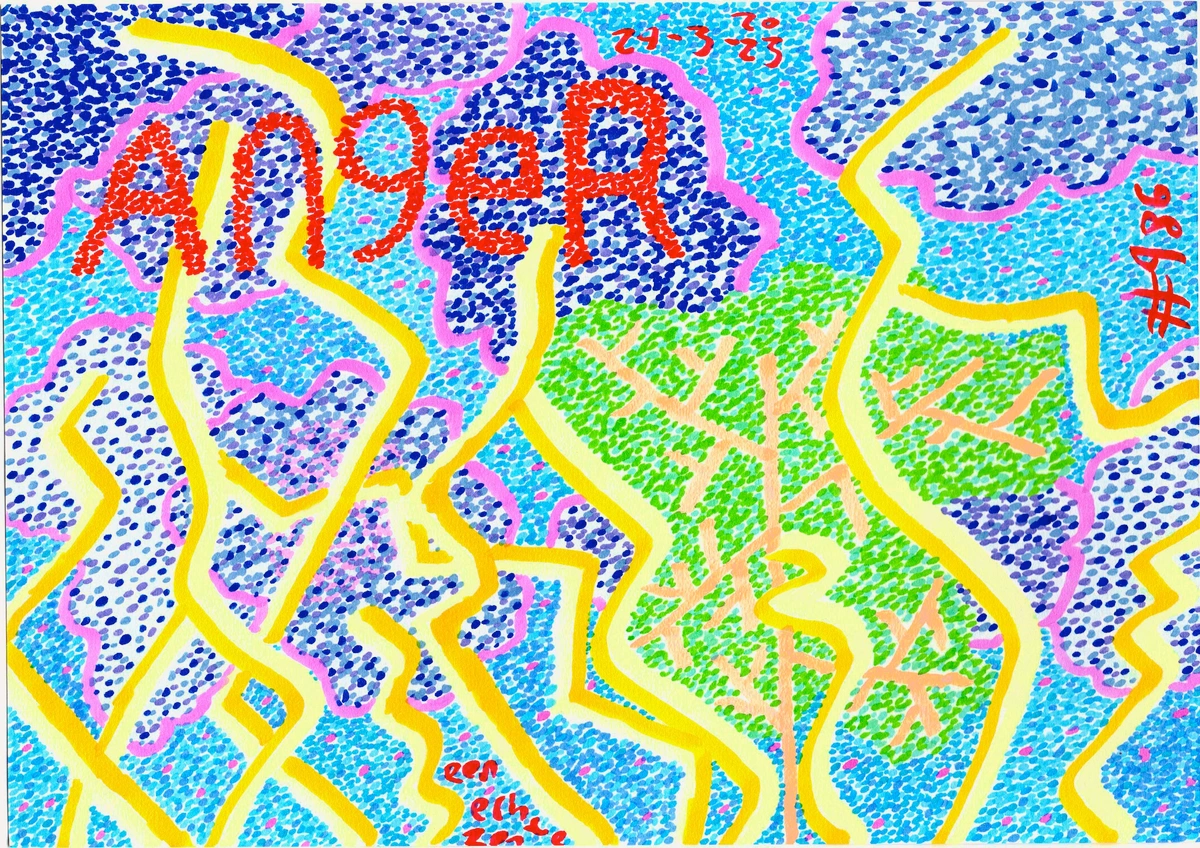
credit, licence
You'll find a growing number of art studios and cultural centers offering workshops ranging from short-term street art techniques to traditional Brazilian crafts, ceramics, painting, and even photography. Imagine spending an afternoon learning a new skill, surrounded by the city's inspiring energy!
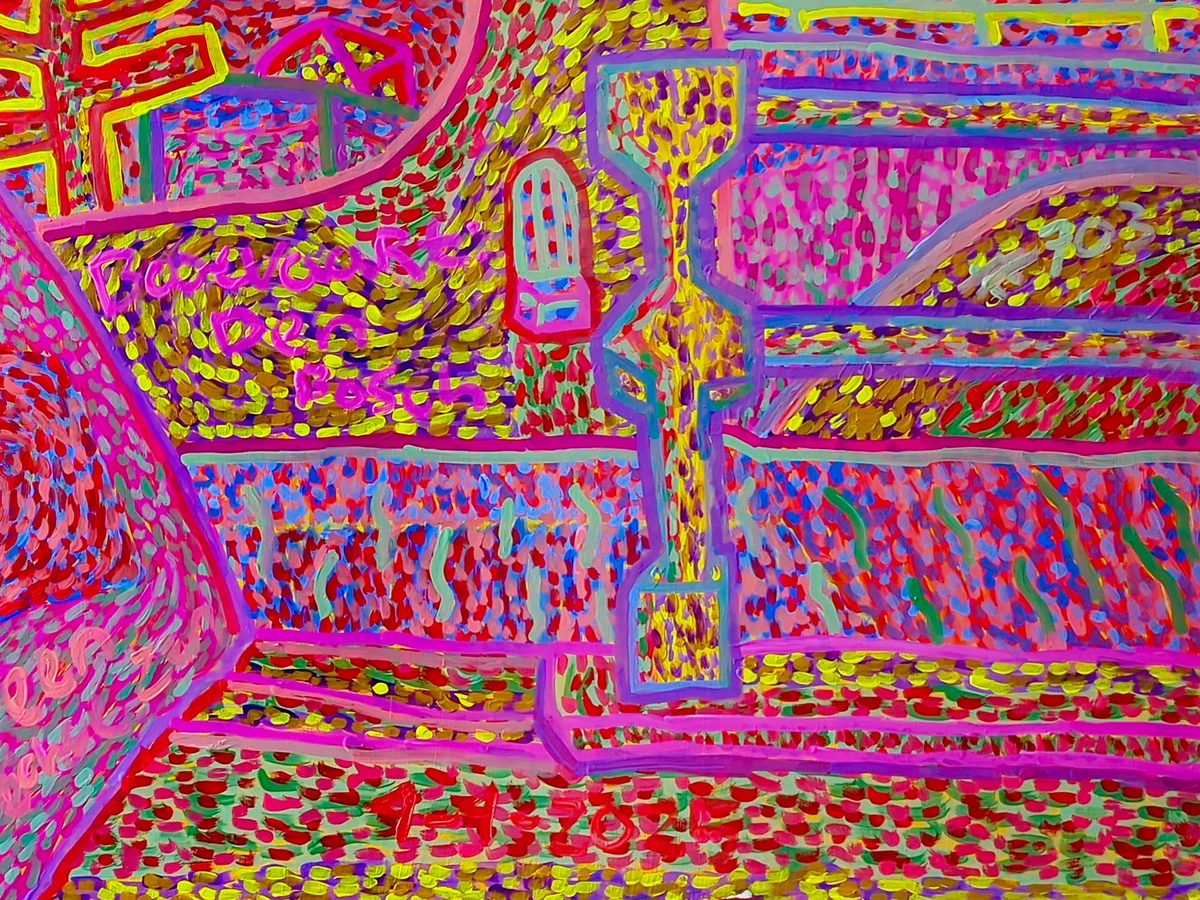
Many galleries in Vila Madalena or Pinheiros, which often champion emerging artists, also host workshops and artist talks, providing a unique chance to connect with local creators and their processes. Institutions like Centro Universitário Belas Artes de São Paulo or FAAP (Fundação Armando Alvares Penteado) often have public workshops or lectures. Even if you're a complete beginner, these experiences are incredibly enriching, allowing you to take a piece of São Paulo's creativity home with you, not just a souvenir. It’s an immersion into the creative spirit, offering a chance to explore your own visual expression, much like my own journey in my creative journey from concept to canvas in abstract art. The city's numerous art schools and public art programs also play a vital role in nurturing new talent and fostering a continuously evolving artistic landscape.
Unique Cultural Crafts
Beyond painting and sculpture, look for workshops focusing on traditional Brazilian crafts. Perhaps learning to make fuxico (a type of fabric rosette), exploring indigenous weaving techniques if available, or even trying your hand at the vibrant world of mosaic art, which you’ll see adorning many public spaces. You might find workshops focused on ceramic sculpture, traditional wood carving, printmaking, or even a crash course in street art techniques like stenciling, allowing you to contribute your own mark (albeit temporarily!). Beyond these, explore workshops in Lace-making (Renda de Bilro), a delicate craft with European roots, or even try the art of Marajoara ceramics, inspired by ancient indigenous cultures from the Amazon. Imagine spending an afternoon creating your own piece under the guidance of a local master! These cultural experiences offer a deeper connection to the country's heritage and a unique artistic perspective, one that goes beyond mere observation. It's about broadening your definition of "art" and embracing the rich tapestry of human creativity that thrives here, from intricate lace to bold contemporary jewelry.
The Performing Arts & Music: São Paulo's Rhythmic Heartbeat
Beyond the visual arts, São Paulo pulsates with an electrifying energy that extends into its performing arts and music scenes. For me, the rhythms of a city are just as much a part of its artistic expression as its painted canvases – they tell a story, evoke emotion, and define a culture. This is a city that loves to move, to sing, to perform, and it offers an incredible array of experiences for every taste, truly showcasing its rhythmic heartbeat.
The Municipal Theatre: A Symbol of Artistic Revolution
Before delving into the broader performing arts scene, it's worth highlighting the Municipal Theatre (Theatro Municipal). This architectural marvel, completed in 1911 by architects Francisco de Paula Ramos de Azevedo, Cláudio Rossi, and Domiziano Rossi, is not just a venue; it's a historical landmark and a work of art in itself. Its eclectic style, richly blending Art Nouveau, Baroque, and Renaissance influences, makes it a stunning visual spectacle, a true jewel of the city, reminiscent of the Paris Opéra. More importantly, it was the host of the pivotal Semana de Arte Moderna de 1922 (Modern Art Week), which kickstarted the Brazilian Modernist movement, literally a stage for artistic revolution! Attending an opera, ballet, or classical concert here is not just about the performance; it's about stepping into a piece of Brazilian art history, an experience that resonates deeply with the city's creative spirit. (You'll find more on the architectural significance of this building in our dedicated architecture section, but trust me, it's breathtaking inside and out). Its opulent interiors, adorned with intricate sculptures, paintings, and stained glass, contribute to an unforgettable cultural experience.
Stages and Sounds: A Diverse Lineup
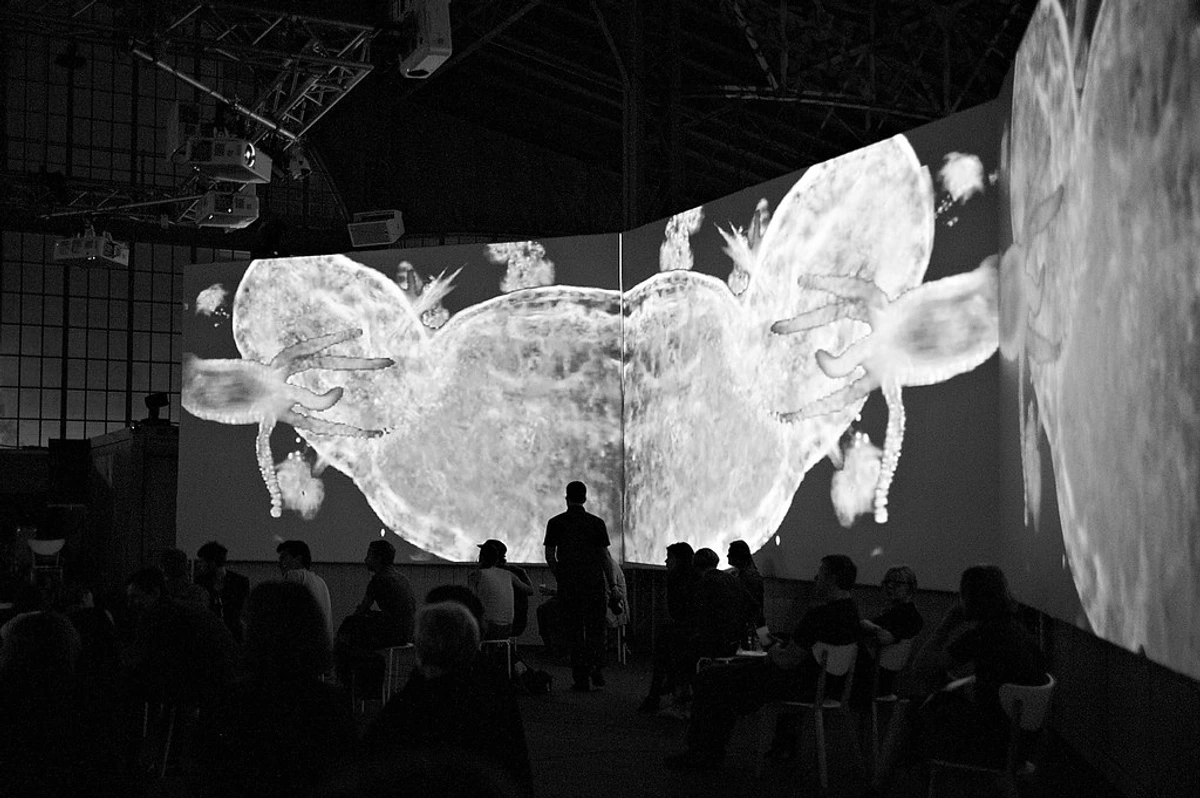
From the grandeur of the Municipal Theatre (which also has architectural significance, as we'll explore) hosting operas and ballets, to the experimental black box theaters scattered across the city, São Paulo's stages are always alive. You can catch world-class symphony orchestras (like the São Paulo Symphony Orchestra – Osesp, often performing at Sala São Paulo, a stunningly renovated former railway station that boasts exceptional acoustics), avant-garde dance performances, and thought-provoking plays exploring contemporary social issues. And then there's the music! São Paulo is a crucible of musical genres, from samba and bossa nova to rock, electronic, and cutting-edge indie sounds. Live music venues abound, from intimate jazz clubs like JazzB and Jazz nos Fundos to massive concert halls and smaller, grungier rock venues, offering a chance to truly feel the city's vibrant pulse. You might even catch a spontaneous samba circle in Vila Madalena or an impromptu capoeira roda, especially in the historic center or at community events! Keep an eye out for performances at SESC Pompeia (another Lina Bo Bardi masterpiece!), which frequently hosts incredible music and theater events, or explore the more underground scenes in neighborhoods like Baixo Augusta, known for its vibrant nightlife and alternative venues. Beyond these, São Paulo is the birthplace of many iconic Brazilian musical genres, and you can find venues specializing in everything from traditional samba and choro (often in more traditional bars and cultural centers) to contemporary MPB (Música Popular Brasileira), jazz, and a thriving electronic music scene. Check local listings for live music at venues like Bar Brahma for classic samba, or Casa Natura Musical for a more contemporary lineup. The city's cultural centers and universities also host a constant stream of free or low-cost performances, offering an accessible way to experience São Paulo's rich performing arts landscape and witness its vibrant cultural dialogues.
Connecting Performance to Visuals
I often find a fascinating dialogue between the performing arts and my own abstract painting process. The improvisation in jazz, the choreographed movements in dance, the narrative arc of a play – they all echo the spontaneous lines, the deliberate compositions, and the unfolding stories within a painting. It’s all about rhythm, emotion, and connection. Exploring São Paulo's performing arts is another way to deepen your understanding of its artistic soul, experiencing creativity in motion.
São Paulo's Culinary Art Scene: A Feast for All Senses
For me, art isn't just about what you see; it's about all the senses, the experiences that awaken your palate as much as your mind. And São Paulo, my friends, is a culinary paradise that rivals its artistic prowess. The city's food scene is as diverse and dynamic as its art, a direct reflection of its rich immigrant history and innovative spirit. Think about it: isn't a master chef's dish a form of ephemeral art, carefully composed, a symphony of flavors and textures? I certainly think so! The city boasts a staggering number of restaurants, from humble street stalls to world-renowned establishments, all contributing to a vibrant, edible landscape.

From Street Food to Michelin Stars: A Culinary Canvas
You can explore world-class fine dining, with restaurants often pushing the boundaries of gastronomy, much like contemporary artists experiment with new mediums and concepts. São Paulo boasts numerous Michelin-starred establishments, from traditional Brazilian cuisine to innovative fusion, but the real soul of its food scene lies in its vibrant markets and unpretentious street food. Imagine tasting a freshly made pastel (a fried pastry with various fillings, a perfect on-the-go snack) or a pão de queijo (irresistible cheesy bread balls) from a street vendor – these are edible masterpieces, deeply embedded in the city's cultural fabric. Don't miss a visit to the Mercado Municipal (Mercadão), a historic market hall that's an architectural gem in itself, offering an array of fresh produce, exotic fruits, spices, and iconic local snacks, including the famous and gargantuan mortadella sandwich. For a taste of Bahia, seek out delicious acarajé – a deep-fried patty made from black-eyed peas, filled with shrimp and spicy vinaigrette – often found in street stalls, a testament to the city’s African influences. Also, be sure to try coxinha (shredded chicken meat, covered in dough, molded into a drumstick shape, breaded, and deep-fried) and for dessert, the ubiquitous brigadeiro (a chocolate fudge ball). The sheer variety, from Italian cantinas in Bexiga to Japanese eateries in Liberdade and traditional Brazilian steakhouses, offers an endless journey of discovery, a truly global culinary canvas, each dish a small work of art.
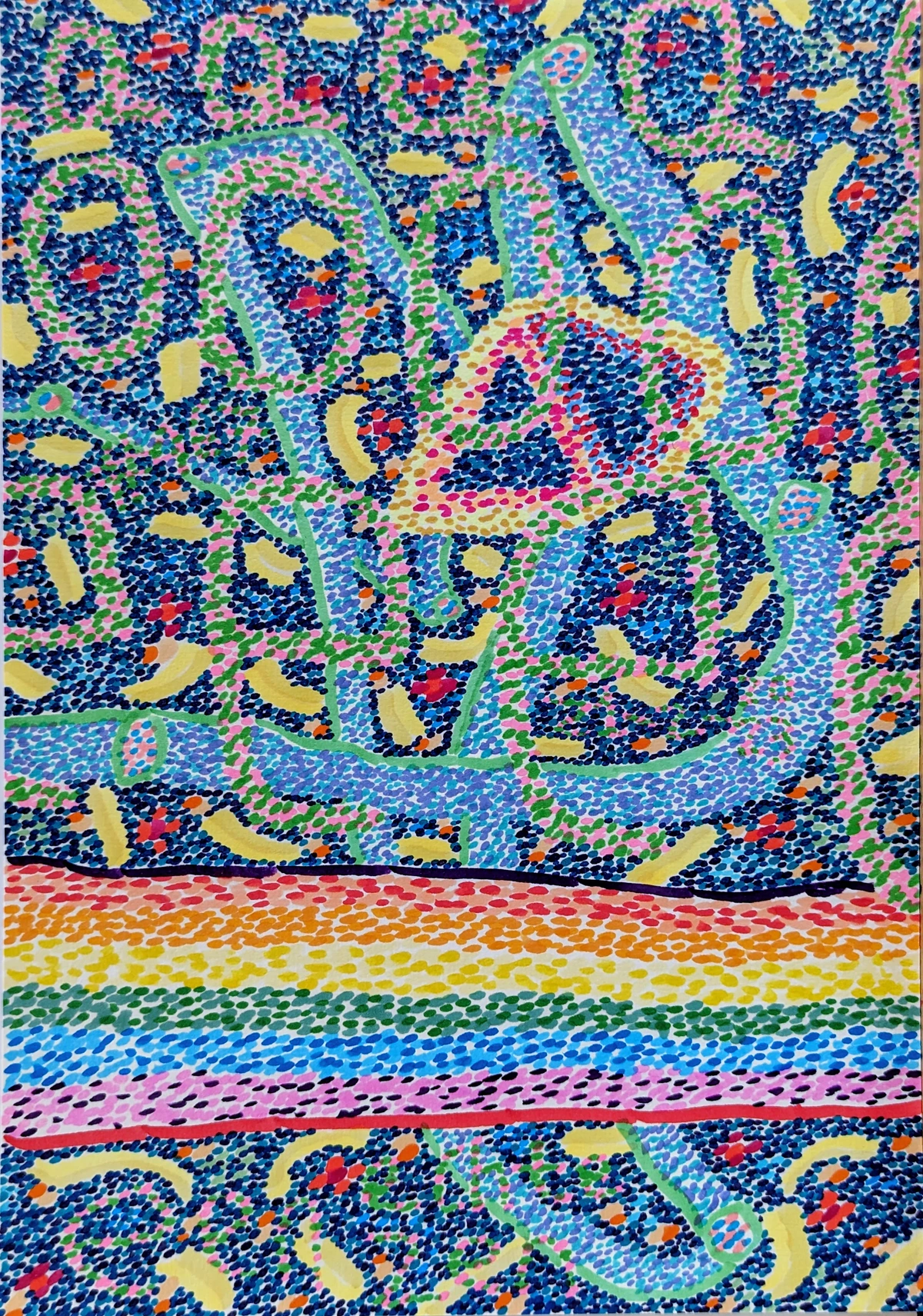
credit, licence
Art and Gastronomy Tours
If you're looking for a curated experience, consider joining a specialized art and gastronomy tour. Many local operators offer itineraries that combine visits to galleries and museums with stops at renowned restaurants or hidden culinary gems. It's an excellent way to savor the best of both worlds, guided by experts who can unveil the stories behind the art and the flavors.
Pairing Art & Food: A Perfect Day
I often find that a day spent absorbing art is perfectly complemented by a thoughtful culinary experience. Perhaps a visit to MASP followed by a modern Brazilian lunch in Jardins, or an afternoon exploring Vila Madalena's street art capped off with a craft beer and some coxinha (a popular Brazilian snack) in a bohemian bar. These pairings create a holistic cultural immersion, reminding us that art extends beyond the gallery walls and into every aspect of life. It’s about savoring every moment, every brushstroke, and every bite.
And remember, São Paulo's artistic pulse doesn't stop when the sun goes down; its nightlife often blends live music, performance art, and vibrant cultural events, creating another layer of artistic immersion.
Frequently Asked Questions (FAQ) About São Paulo's Art Scene
Navigating a vibrant art scene like São Paulo's can sometimes bring up a few questions. Here are some of the common ones I hear, and my honest take on them:
Q: What's the best time of year to visit São Paulo for art?
A: Honestly, there's always something happening! However, if you're aiming for the biggest events, the São Paulo Bienal occurs every odd-numbered year, typically from September to December. SP-Arte is usually in April. Many contemporary galleries also launch new exhibition cycles in March and September, making these great times for fresh discoveries. So, checking the annual calendar for these major events can definitely enhance your trip, but don't fret if your dates don't align – the permanent collections and street art are year-round wonders.
Q: What about art markets or craft fairs in São Paulo?
A: São Paulo is fantastic for art markets and craft fairs, offering a more informal way to discover unique pieces and interact directly with artists. The Feira de Arte da Praça da República (Republic Square Art Fair), held on Sundays, is a classic, featuring painting, sculpture, and crafts. The Benedito Calixto Fair in Pinheiros, also on Saturdays, is another beloved spot for antiques, crafts, and live music, with a strong artistic vibe. Keep an eye out for smaller, pop-up design and art markets, especially in neighborhoods like Vila Madalena. These are excellent places to find original, affordable art and immerse yourself in the local creative energy.
Q: Is São Paulo's art scene accessible to English speakers?
A: For the most part, yes. Major institutions like MASP and Pinacoteca will have information and often guided tours available in English. Many contemporary galleries, especially in areas like Jardins, also have English-speaking staff. However, for a truly immersive experience, and especially when exploring smaller, independent spaces or street art, a few basic Portuguese phrases can go a long way. It's not just about understanding, but about connecting! I always recommend having a translation app handy on your phone.
Q: How can I discover emerging artists in São Paulo?
A: This is my favorite part! Beyond the main museums, you'll want to dive into the gallery scene in neighborhoods like Vila Madalena and Pinheiros. Attend openings (often free and open to the public), visit independent art fairs like Feira Parte, and follow local art blogs or Instagram accounts. São Paulo's art schools also host student exhibitions that are fantastic for spotting fresh talent. And of course, keep an eye on the ever-changing street art – often a precursor to gallery recognition.
Q: Are there art experiences suitable for families or children?
A: Absolutely! Many museums, including MASP and Pinacoteca, offer educational programs and workshops for children, often designed to be interactive and engaging. The sculpture garden at MAM is a fantastic open space for kids to explore art outdoors, and parks like Ibirapuera often host free family-friendly cultural events. Even street art tours can be engaging for younger audiences, turning the city into a giant treasure hunt. São Paulo understands that art is for everyone, regardless of age.
Q: Are there any particular art districts or areas best for walking tours?
A: Yes, definitely! For street art, Vila Madalena (especially Beco do Batman and surrounding streets) is a must. For galleries, both Jardins and Pinheiros are great for leisurely strolls between spaces. The Historic City Center offers a mix of architectural gems and cultural centers like CCBB, best explored on foot during the day. Just remember comfy shoes and stay hydrated!
Q: Is São Paulo's art scene accessible to visitors with disabilities?
A: São Paulo's major cultural institutions, like MASP and Pinacoteca, have made significant strides in improving accessibility, offering ramps, elevators, and accessible restrooms. However, like many older, dense cities, some smaller galleries, historic buildings, or certain street art areas might present challenges due to uneven pavements or limited infrastructure. It's always advisable to check individual venue websites for specific accessibility information or contact them directly before your visit. Public transport, particularly the Metro, is generally quite accessible, but planning routes in advance is recommended.
Q: What's the best way to buy art directly from local artists in São Paulo?
A: This is one of my favorite pursuits! Your best bet is to visit independent art fairs like Feira Parte, attend gallery openings in Vila Madalena or Pinheiros, and explore open studio events that pop up throughout the year. Many artists also have active Instagram accounts where you can connect directly. Building a personal connection with the artist or gallerist often leads to the most rewarding acquisitions, and you'll often find a piece that truly resonates with your own aesthetic, much like my own abstract creations.
Q: Are there guided art tours available in São Paulo?
A: Absolutely, and I highly recommend them, especially for your first visit or if you want to dive deep into a specific aspect of the art scene! Many local tourism companies and independent art historians offer specialized guided tours focusing on street art (like Beco do Batman tours), modernist architecture, or visits to specific gallery districts. A good guide can provide invaluable context, introduce you to hidden gems, and help you navigate the city efficiently, especially when exploring sprawling areas like the historic center or the vibrant street art alleys. Check online platforms for tour operators or inquire at your hotel for recommendations; it’s an investment that significantly enhances your artistic journey.
Q: What are the best ways to support São Paulo's local artists?
A: Supporting local artists is incredibly important for nurturing a vibrant art scene. Beyond purchasing art from galleries, consider attending independent art fairs like Feira Parte, where you can often buy directly from the creators. Look for open studio events, follow artists on social media (many sell directly through Instagram), and attend workshops they might offer. Even sharing their work or spreading the word about their exhibitions makes a difference. Remember, every purchase, every visit, every share contributes to the thriving ecosystem of creativity in São Paulo, helping artists continue their vital work, much like your interest in my abstract creations allows me to keep exploring new forms.
Q: How can I find out about current exhibitions and events during my visit?
A: The best way is to check local cultural guides and websites. Reputable sources include the websites for individual museums (MASP, Pinacoteca, etc.), the official São Paulo tourism site, and cultural listings in local newspapers or online magazines (often available in English). Following key galleries and cultural institutions on social media can also provide real-time updates on openings and special events. I always make a habit of checking these sources upon arrival to ensure I don't miss anything. You might also stumble upon posters or flyers in cafes and cultural hubs, and don't underestimate the power of simply asking locals for recommendations!
Q: Are there any art-themed hotels or unique accommodations in São Paulo?
A: Yes, absolutely! São Paulo, with its focus on design and aesthetics, offers several hotels that integrate art into their identity. Hotels like Hotel Unique are famous for their stunning architecture and design-forward interiors, often featuring art installations. Others, particularly boutique hotels in neighborhoods like Jardins or Pinheiros, often showcase local artists' work in their common areas and rooms. It's always worth checking a hotel's website or reviews for their artistic offerings if you're looking for an accommodation that doubles as an art experience. Staying in an art-focused hotel can truly enhance your immersion in the city's creative spirit, providing inspiration right from your doorstep.
Q: Is São Paulo's art scene safe to explore at night?
A: Exploring certain areas of São Paulo, especially the bustling gallery districts, can be enjoyable and safe in the evenings, particularly if you stick to well-lit, popular streets and take ride-shares or taxis directly to and from venues. Many galleries host evening openings, and cultural centers often have events. However, like any major metropolis, it's always wise to exercise caution, avoid walking alone in deserted areas, and be aware of your surroundings. Some street art areas are best visited during the day for both safety and visibility.
Q: How safe is it to explore the street art areas?
A: Like any major city, it's about being aware of your surroundings. Popular areas like Beco do Batman in Vila Madalena are generally busy and safe during the day. When exploring other areas, especially the downtown core, it’s best to go during daylight hours, ideally with a local guide or in a group. Always keep an eye on your belongings, and if something feels off, trust your instincts. The art is powerful, but your safety is paramount.
Q: Are there any art-focused festivals beyond the Bienal and SP-Arte?
A: Absolutely! São Paulo's cultural calendar is packed. Beyond the major fairs, keep an eye out for events like Mostra Internacional de Cinema de São Paulo (mentioned in the table but worth re-emphasizing here as a festival), and a myriad of neighborhood cultural festivals. For music lovers, Virada Cultural is an epic 24-hour festival spanning the entire city, often featuring street art, performances, and concerts. Many galleries also hold "Gallery Weekend" events, offering special programs and extended hours for a concentrated art-hopping experience.
Q: What's the best way to combine art with other cultural experiences in São Paulo?
A: São Paulo makes it incredibly easy! Many cultural centers like CCBB offer art exhibitions alongside theater, music, and film. Food is also a massive part of the city's culture – I often find myself pairing a museum visit with a stop at a local market or a traditional Brazilian restaurant nearby. The city's diverse neighborhoods also offer unique cultural experiences, from the Japanese quarter of Liberdade to the Italian influences of Bexiga. Art here is interwoven into the very fabric of daily life.
Q: What's the difference between an art museum and an art gallery?
A: This is a great question that often trips people up! Generally, art museums are non-profit institutions focused on collecting, preserving, and exhibiting art for educational and cultural purposes, often with permanent collections that span historical periods and movements. Think MASP or Pinacoteca. Art galleries, on the other hand, are typically commercial spaces whose primary function is to sell art by living artists, often representing a roster of artists and hosting temporary exhibitions. They are where you go to discover and potentially purchase contemporary art, like those found in Vila Madalena or Jardins. While both are essential to the art ecosystem, their missions and operational models differ significantly.
Q: How do copyright and intellectual property apply to street art?
A: This is a fascinating and complex area! Generally, street art, even when on public property, is still considered a creative work and is protected by copyright under Brazilian law. This means that, technically, the artist retains the rights to their work, and unauthorized reproduction or commercial use can lead to legal issues. However, the enforcement of these rights can be challenging due to the ephemeral nature of street art and the context of its creation (sometimes without official permission). Public domain images of street art, if the artist has explicitly waived rights or if the work falls into certain legal exceptions, can be used more freely. But as a rule of thumb, it's always best to assume copyright applies and seek permission or attribution if you plan to use street art images for commercial purposes. Many artists are happy for their work to be shared non-commercially for appreciation, but commercial exploitation is a different story. It's a constant dialogue between public visibility and artistic ownership, much like the broader conversation around digital art and NFTs. For commercial purposes, a good example would be stock image licenses for art like this: 
My journey through São Paulo's art scene has been nothing short of a revelation – a kaleidoscopic journey that has forever altered my perspective. It's a city that doesn't just display art; it embodies it, breathes it, and constantly reinvents itself. From the solemn, hallowed halls of its grand institutions to the riotous, ephemeral explosion of color on its streets, São Paulo offers an artistic experience unlike any other, truly a living canvas waiting to be explored. It’s a place that challenges your preconceptions, inspires new ways of seeing, and ultimately, captivates the soul of any true art lover, myself included. So, pack your bags, prepare to be utterly surprised, and dive headfirst into the endless, exhilarating creative energy of this magnificent Brazilian metropolis. And who knows, perhaps this vibrant city will even ignite or amplify your own creative endeavors, much like its boundless dynamism continues to fuel my ongoing exploration into abstract creations, constantly inspiring new approaches to mixed-media sculptures and pushing the boundaries of my own artistic expression. São Paulo is not just a destination; it's an experience, a living masterpiece that invites you to be a part of its unfolding story, leaving an indelible mark on your artistic soul.
Art Fairs and Events: More Than Just the Bienal
While the Bienal is undeniably São Paulo's crown jewel, the city's art calendar is consistently full of other significant events, offering a continuous feast for art enthusiasts. It’s a calendar I always keep an eye on, as these events provide unique insights into the current trends and emerging talents, allowing you to gauge the pulse of both established and nascent art movements, much like observing shifts in abstract expressionism.
SP-Arte, for example, is Brazil's largest art fair, attracting galleries, collectors, and enthusiasts from around the globe annually, typically held in the iconic Ciccillo Matarazzo Pavilion. It's an incredible platform for discovering new talent and understanding the pulse of the Latin American art market, showcasing everything from contemporary painting to sculpture and photography. Beyond these major events, smaller, independent art fairs and open studio weekends regularly pop up, particularly in neighborhoods like Vila Madalena and Pinheiros, offering more intimate encounters with artists and their work. These smaller events are often where you find the most raw and experimental pieces, a true delight for those looking to buy art from local artists.
Year-Round Artistic Happenings
To help you plan your visit and make the most of São Paulo’s dynamic art scene, here’s a quick overview of some recurring art events and their focuses:
Event Name | Focus | Typical Timing | Notes |
|---|---|---|---|
| São Paulo Bienal | International Contemporary Art | Every 2 years (odd years) | Monumental, global impact, held at Ibirapuera Park. |
| SP-Arte | Brazil's largest Art Fair (Contemporary Art) | April | Major commercial fair for galleries and collectors, showcasing painting, sculpture, and photography. |
| Design Weekend (DW!) | Design, Architecture, Urbanism | August | Features exhibitions, talks, installations across the city, highlighting innovative design. |
| Feira Parte | Independent Art Fair | Annually | Showcases emerging artists and smaller galleries, a great spot for discovery, often held in different creative venues. |
| Mostra Internacional de Cinema de São Paulo | International Film Art | October | A major film festival, showcasing cinematic art from around the world, blending cinema with visual storytelling. |
| ArtRio | Sister Art Fair (Rio de Janeiro) | September | A significant event for Brazilian and Latin American art market, often attracting São Paulo collectors and offering a different regional perspective. |
| Circuito de Arte SP (CASP) | Emerging & Independent Art | Varies (often multiple editions/year) | Showcases a diverse range of new artists in various pop-up locations across the city, often focusing on experimental work. |
| São Paulo Fashion Week (SPFW) | Fashion, Design, and Visual Arts | Typically April & October | While primarily fashion-focused, SPFW is a major cultural event that showcases visual creativity, design, and often incorporates artistic collaborations and installations, reflecting São Paulo's broader creative industries and the intersection of art and fashion. |
Note: Dates and events can vary, always check official schedules before planning your trip.
These events ensure that São Paulo's art calendar is always bustling, offering a constant stream of new discoveries and opportunities to engage with the local and international art world. I always make sure to consult these schedules when planning my own visits, as they can truly shape the trajectory of your artistic journey.
São Paulo's Artistic Soul: A Melting Pot of Influences
What truly sets São Paulo apart, in my opinion, is how its art acts as a vibrant crucible where countless cultural traditions converge and transform. It’s a dynamic interplay that creates unique narratives and visual languages, influencing everything from the grand museum collections to the ephemeral street art. For instance, the strong Japanese-Brazilian community in Liberdade has contributed a distinctive aesthetic to street art and contemporary installations, with influences ranging from manga to traditional calligraphy and printmaking techniques. Meanwhile, the enduring African heritage is evident in the rhythmic patterns and symbolic imagery found across various art forms, from sacred objects to contemporary painting and performance art, reflecting the historical depth and ongoing evolution of Brazilian identity. This constant blending and reinterpretation are what make São Paulo's art so profoundly rich and endlessly fascinating, a true testament to its diverse demographic and open cultural dialogue.
To truly appreciate the depth of São Paulo's artistic soul, it's worth familiarizing yourself with some of the pivotal figures in Brazilian art. Their work often reflects the country's unique history, social dynamics, and vibrant cultural identity. They are the giants upon whose shoulders today's artists stand.
Contemporary Trends and Emerging Artists
Beyond the established names, São Paulo's art scene is constantly evolving with new trends and a vibrant roster of emerging artists. I've noticed a significant focus on themes of identity, environmental sustainability, and social justice, often explored through diverse mediums like video art, performance, and large-scale installations. There's also a strong interest in revisiting and reinterpreting Brazilian historical narratives through a contemporary lens, offering fresh perspectives on the country's past and present, often challenging dominant narratives. Furthermore, the city sees a strong emphasis on digital art and new media, with artists exploring virtual reality, augmented reality, and interactive installations, reflecting a global trend while often incorporating local cultural contexts. Keep an eye on independent art fairs and artist-run spaces, as these are often the first places to spot the next wave of groundbreaking talent. Engaging with these emerging voices offers a crucial glimpse into the future of Brazilian art and how it dialogues with global artistic movements, echoing the ongoing evolution of contemporary art worldwide.
Notable Brazilian Artists to Explore
To truly appreciate the depth of São Paulo's artistic soul, it's worth familiarizing yourself with some of the pivotal figures in Brazilian art. Their work often reflects the country's unique history, social dynamics, and vibrant cultural identity. They are the giants upon whose shoulders today's artists stand, each contributing a unique thread to the rich tapestry of Brazilian art history.
Artist Name | Key Movement(s) | Notable Characteristics/Contributions | Why They Matter |
|---|---|---|---|
| Tarsila do Amaral | Modernism, Anthropophagy | Bold colors, simplified forms, indigenous motifs, pioneering Brazilian modernism, key figure in Semana de Arte Moderna 1922 | Defined a uniquely Brazilian aesthetic, influenced cultural identity, pivotal for Brazilian Modernism. |
| Anita Malfatti | Modernism, Expressionism | Introduced European Expressionism to Brazil, controversial exhibitions, challenged academic art, key figure in Semana de Arte Moderna 1922 | Her bold, expressive works were a catalyst for Modernism in Brazil. |
| Candido Portinari | Modernism, Social Realism | Monumental murals, paintings depicting Brazilian life, strong social commentary, often focused on laborers | Chronicled the lives of ordinary Brazilians, powerful social messages, iconic national artist. |
| Lygia Clark | Neoconcretism, Installation, Performance | Interactive art, 'relational objects,' sensory experiences, challenging the viewer's role and perception of art | Broke down barriers between art and audience, experimental pioneer, key figure in participatory art. |
| Hélio Oiticica | Neoconcretism, Performance, Installation | 'Parangolés' (wearable art), interactive environments, participatory art, 'environmental art' | Transformed passive viewing into active participation, groundbreaking, explored the boundaries of art and life. |
| Alfredo Volpi | Modernism, Concrete Art | Flag-like compositions, geometric forms, vibrant colors, popular motifs, 'Bandeirinhas' series | Master of Brazilian Concrete Art, known for his poetic abstractions and use of popular culture. |
| Beatriz Milhazes | Contemporary, Abstract | Vibrant collages, intricate patterns, Brazilian flora and fauna, Baroque elements, use of popular culture motifs | Blends pop art, abstract expressionism, and local traditions, internationally acclaimed for her unique style. |
| Cildo Meireles | Conceptual Art, Installation, Performance | Politically charged works, exploring censorship, consumerism, and socio-political critique in Brazil | Influential conceptual artist, challenged established norms, profound impact on political art. |
| Adriana Varejão | Contemporary, Baroque influence, Body Art | Explores themes of colonialism, identity, Brazilian history through painting, sculpture, and installation, often using tiles and 'azulejos' | Internationally recognized for her visually striking and intellectually rigorous engagement with Brazilian cultural heritage. |
| Ernesto Neto | Contemporary, Installation, Sculpture | Large-scale, organic, often textile-based installations that invite interaction and explore themes of nature, spirituality, and the senses | Globally renowned for immersive, multisensory environments that challenge traditional art viewing. |
| Vik Muniz | Contemporary, Photography, Mixed Media | Recreates famous artworks and pop culture images using unusual materials (e.g., chocolate, trash) | Known for his clever and thought-provoking reconstructions, challenging perceptions of art and reality. |
This is just a small taste, of course, but these artists offer a fantastic starting point for understanding the lineage of artistic innovation that continues to thrive in São Paulo.
Navigating the Artistic Labyrinth: Practical Tips for the Art Explorer
São Paulo is vast, and its traffic can be legendary. Here are a few tips I've picked up for making the most of your art exploration, ensuring you spend more time absorbing art and less time battling the urban sprawl. I've learned these the hard way, so take my advice, fellow art adventurers! Don't let the city's scale intimidate you; with a little planning, you can navigate its artistic labyrinth with ease.
Tip | Description | Why it Matters |
|---|---|---|
| Plan Your Days | Group nearby museums/galleries together to maximize your time. | Minimizes travel time, especially with São Paulo's notorious traffic, and lets you immerse yourself in an area. |
| Use Public Transport | The Metro is surprisingly efficient and often faster than taxis/rideshares. | Avoids traffic frustrations, is cost-effective, and offers a glimpse into local life. |
| Wear Comfy Shoes | You'll be doing a lot of walking, especially within museum complexes and exploring street art districts. | Your feet will thank you! Essential for marathon art viewing. |
| Check Opening Hours | Many museums are closed on Mondays, and hours can vary, so always double-check online. | Avoids disappointment and wasted travel time. |
| Embrace the Unexpected | Allow for detours and serendipitous discoveries. São Paulo loves surprising you. | Some of the best art isn't in a museum, but around the next corner, waiting to be found. |
| Learn Basic Portuguese | A few phrases (olá, obrigado, onde é?) go a long way, especially in smaller galleries or local eateries. | Enhances interaction, shows respect for local culture, and can lead to richer experiences. |
| Stay Hydrated | São Paulo can be hot and humid. Carry water, especially when walking outdoors. | Keeps you energized and comfortable throughout your artistic adventures. |
| Engage with Locals | Don't be afraid to ask for recommendations or directions. São Paulo residents are often proud of their city's cultural offerings. | Leads to unexpected discoveries, hidden gems, and richer, more authentic experiences. |
| Download Offline Maps | Essential for navigating without constant data or when signal is weak. | Prevents getting lost and saves on roaming charges, ensuring a smooth exploration. |
| Consider Guided Tours | For street art or specific architectural routes, a local guide can offer invaluable insights. | They can reveal hidden gems and historical context you might otherwise miss. |
| Stay Connected | A local SIM card or e-SIM is invaluable for navigation and accessing online cultural listings. | Helps with real-time updates on events, maps, and communication. |
| Safety Smarts | Like any major city, be aware of your surroundings, especially at night or in less-crowded areas. | Protects your belongings and ensures a stress-free exploration. |
| Food & Coffee Breaks | Integrate culinary stops into your art route to refuel and experience local flavors. | São Paulo's food scene is an art form in itself – savor it! |
| Flexibility is Key | Traffic and unexpected closures can happen. Be ready to adjust your plans. | Maintains a relaxed and enjoyable art adventure. |
| Use Ride-Sharing Apps | For longer distances or when tired, apps like Uber or 99 are widely available and reliable. | Offers convenience and safety, especially when returning late. |
I cannot stress the importance of soaking in the atmosphere enough. The city’s energy is contagious, and often, the most memorable artistic encounters happen unexpectedly. So, take your time, let yourself get a little lost, and embrace the vibrant chaos that is São Paulo's art scene. It's a journey, not just a checklist, and the beauty is often in the unexpected detours and discoveries.
Beyond the Canvas: São Paulo's Architectural & Design Prowess
São Paulo's cityscape is dotted with masterpieces from renowned architects like Oscar Niemeyer, Paulo Mendes da Rocha (a Pritzker Prize laureate), and Lina Bo Bardi, whose influence extends far beyond MASP. Their works showcase a unique blend of brutalist aesthetic, tropical modernism, and an intrinsic understanding of urban living, often blurring the lines between functional structure and pure sculpture. Walking through areas like the city center or Avenida Paulista is like flipping through an architectural history book, constantly encountering buildings that are artworks in themselves, reflecting a rich period of Brazilian modernism. It's a different kind of art, perhaps, but one that profoundly shapes the visual experience of the city and offers a fascinating counterpoint to the more explicit [ultimate-guide-to-art-deco-movement] styles found elsewhere, offering a distinctly Brazilian flavor to modernism. São Paulo's cityscape is a vibrant gallery of modernist and contemporary architectural masterpieces, a true testament to Brazil's innovative spirit in urban design and its ongoing dialogue with global architectural movements.
It's impossible to talk about art in São Paulo without acknowledging its incredible architecture. The city is a living museum of modernist design, a testament to bold vision and innovative urban planning. While MASP is a prime example, you'll see stunning structures all over the city that blur the lines between architecture and sculpture. It’s a constant interplay between the built environment and artistic expression, making the city itself a grand gallery. The city’s skyline itself tells a story of ambition, innovation, and a constant dialogue between form and function, much like a complex abstract artwork reveals new depths with every viewing.
São Paulo's cityscape is dotted with masterpieces from renowned architects like Oscar Niemeyer, Paulo Mendes da Rocha (a Pritzker Prize laureate), and Lina Bo Bardi, whose influence extends far beyond MASP. Their works showcase a unique blend of brutalist aesthetic, tropical modernism, and an intrinsic understanding of urban living. Oscar Niemeyer, for instance, with his poetic curves and bold forms, gifted São Paulo architectural icons like the Copan Building and much of the Ibirapuera Park complex. His fluid designs often reflect the sensuality of the Brazilian landscape and people, a stark contrast to more rigid European modernism. Paulo Mendes da Rocha, a Pritzker Prize laureate, is known for his 'Brazilian Brutalism,' emphasizing raw concrete, structural honesty, and a profound respect for the urban context, as seen in his renovation of the Pinacoteca. And Lina Bo Bardi's groundbreaking work at MASP and SESC Pompeia exemplifies a humanist approach to brutalism, creating democratic spaces that foster community and cultural exchange. Walking through areas like the city center or Avenida Paulista is like flipping through an architectural history book, constantly encountering buildings that are artworks in themselves, reflecting a rich period of Brazilian modernism. It's a different kind of art, perhaps, but one that profoundly shapes the visual experience of the city and offers a fascinating counterpoint to the more explicit [ultimate-guide-to-art-deco-movement] styles found elsewhere. For me, these structures are as much a part of São Paulo's art scene as any painting or sculpture.
Key Architectural Highlights (Beyond Museums)
Building/Area | Architect(s) | Style/Significance | What to Look For |
|---|---|---|---|
| Copan Building | Oscar Niemeyer | Iconic residential skyscraper, sinuous curves, a city within a building | Its distinctive 'S' shape and massive scale, offering a microcosm of urban life. |
| Edifício Itália | Franz Heep | Second-tallest building in São Paulo, panoramic views | The observation deck for breathtaking 360-degree cityscapes. |
| SESC Pompeia | Lina Bo Bardi | Revolutionary industrial transformation into a vibrant cultural center | Bold concrete forms, integrated public spaces, and playful design elements. |
| São Paulo Cathedral | Maximilian Emil Hehl (Neo-Gothic) | Impressive cathedral in Praça da Sé, a landmark of faith and architecture | Detailed stained glass, sculptures, and its imposing presence in the historic center. |
| Municipal Theatre | Ramos de Azevedo (Eclectic) | European-inspired opera house, a cultural cornerstone | Opulent interiors, intricate facade, and a rich history of performances. |
| Ibirapuera Park Complex | Oscar Niemeyer, Roberto Burle Marx (landscape) | Iconic modernist park complex, cultural heart of the city | The OCA (dome), Auditoriums, and the Bienal Pavilion itself, all designed by Niemeyer. |
| Lina Bo Bardi's Glass House (Casa de Vidro) | Lina Bo Bardi (Modernist) | Her personal residence, a pioneering example of modernist residential architecture in Brazil | Experience the integration of nature and modern living, a quiet but profound architectural statement. |
| Teatro Oficina | Lina Bo Bardi | Revolutionary theater space, blurring lines between audience and stage, innovative brutalist design | Its unique, narrow stage and dynamic use of space, a living architectural performance. |
| Edifício Altino Arantes (Banespão) | Plínio Botelho do Amaral | Art Deco skyscraper, inspired by Empire State Building, panoramic city views | The observation deck for a historical perspective and stunning vistas of the sprawling city. |
This architectural heritage provides a rich context for understanding the city's artistic modernism, showing how São Paulo has consistently embraced bold, innovative visions. Consider taking a specialized architectural tour to truly appreciate the layers of history and design embedded in its urban fabric; it's like a masterclass in urban art.
Art and Urban Planning
São Paulo's architectural evolution isn't just about individual buildings; it's deeply intertwined with its urban planning and social aspirations, reflecting a conscious effort to shape the urban experience. The development of areas like Ibirapuera Park, with its harmonious blend of art, nature, and recreational spaces, exemplifies how art and design have been integrated into the city's very fabric, creating democratic spaces for public enjoyment and cultural exchange. This thoughtful approach to public spaces transforms the city itself into a curated experience, where every plaza, park, and monumental avenue offers a moment for reflection and aesthetic appreciation, proving that functional spaces can also be profoundly beautiful.

credit, licence
